WWJ, the world's first commercial radio station
Unknown
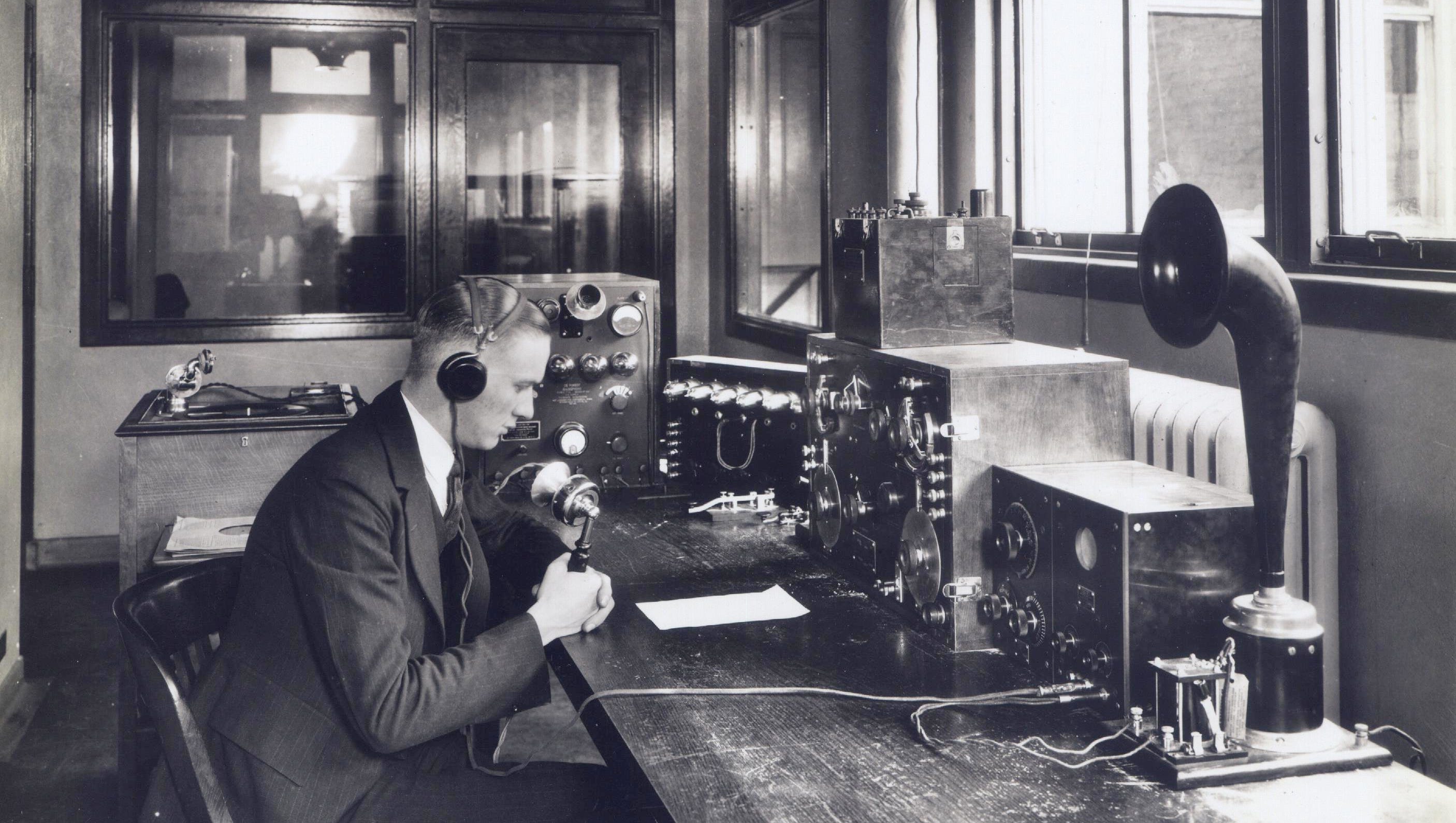
The radio station known for nearly a century now as WWJ began as a birthday gift from Detroit News Publisher W.E. Scripps to his son, W.J. "Bill" Scripps, who had asked for a radio set with which he could experiment. Above, Fred Lathrop mans the operator's desk circa 1922.
The Detroit News Archives
In 1920, Clyde E. Darr, right, handles the controls of his transmitter at 137 Hill Avenue in Highland Park, while Detroit News building superintendent W.E.McGuire, left, listens. It was one of several experiments before The Detroit News would become the first newspaper to have its own radio station, which it set up in a quiet corner of its building.
The Detroit News Archives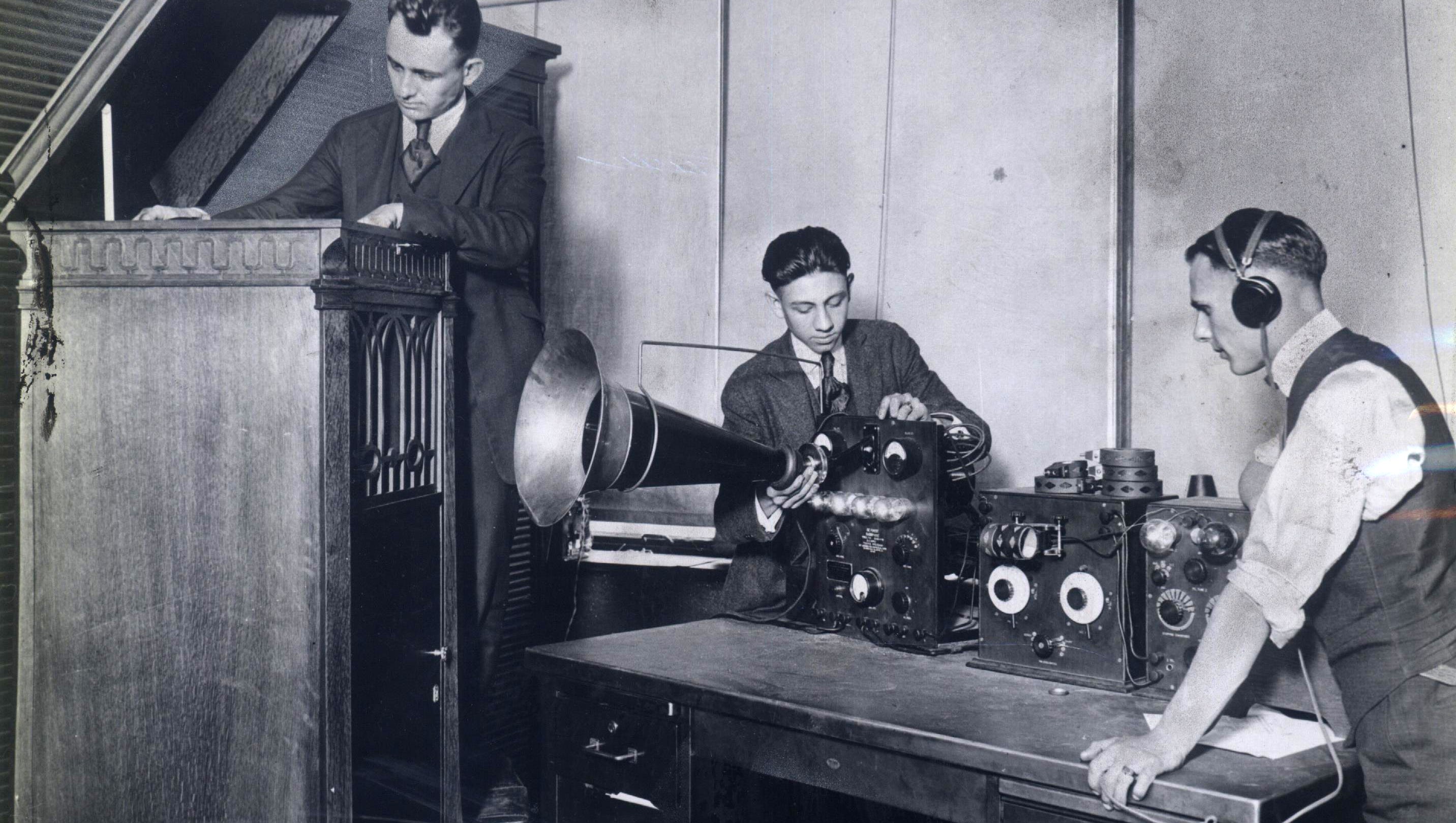
This photo made a short time after Aug. 20, 1920 approximates the scene that night in The Detroit News' makeshift studio, when station 8MK went on the air for the first time. From left are Howard Trumbo, a record shop manager who took part in the event; Detroit News office boy Elton Plant; and radio engineer Frank Edwards. Plant was drafted as the announcer because he had a good speaking and singing voice.
The Detroit News Archives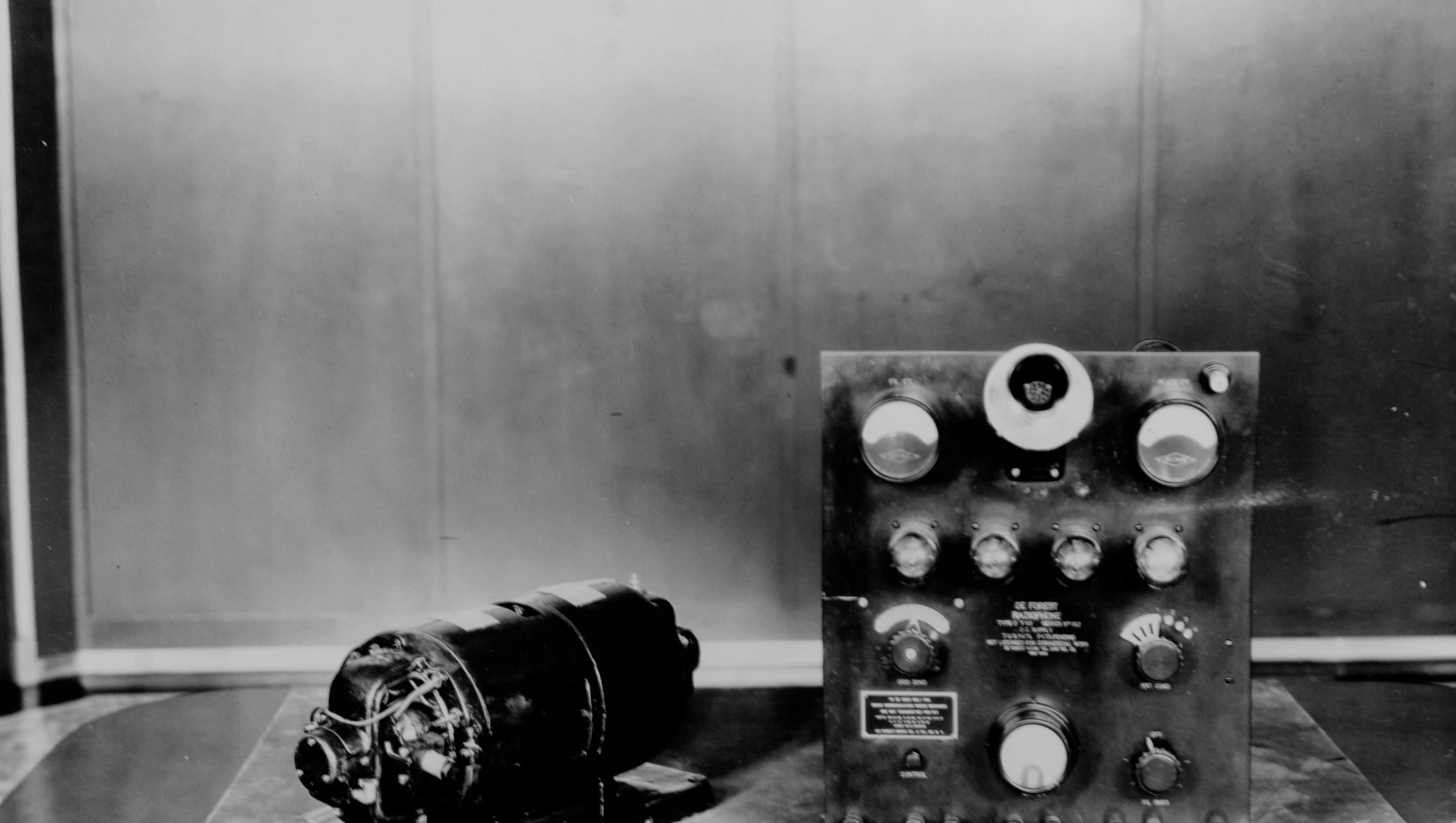
This is the first-generation equipment that powered the first transmissions of 8MK, which began broadcasting daily on an experimental basis, becoming the world's first commercial radio broadcasting station. A quarter-horsepower motor drove the 150-watt/500 volt direct current generator that powered the transmitter, right, consisting of two oscillator and two rectifier tubes.
The Detroit News Archives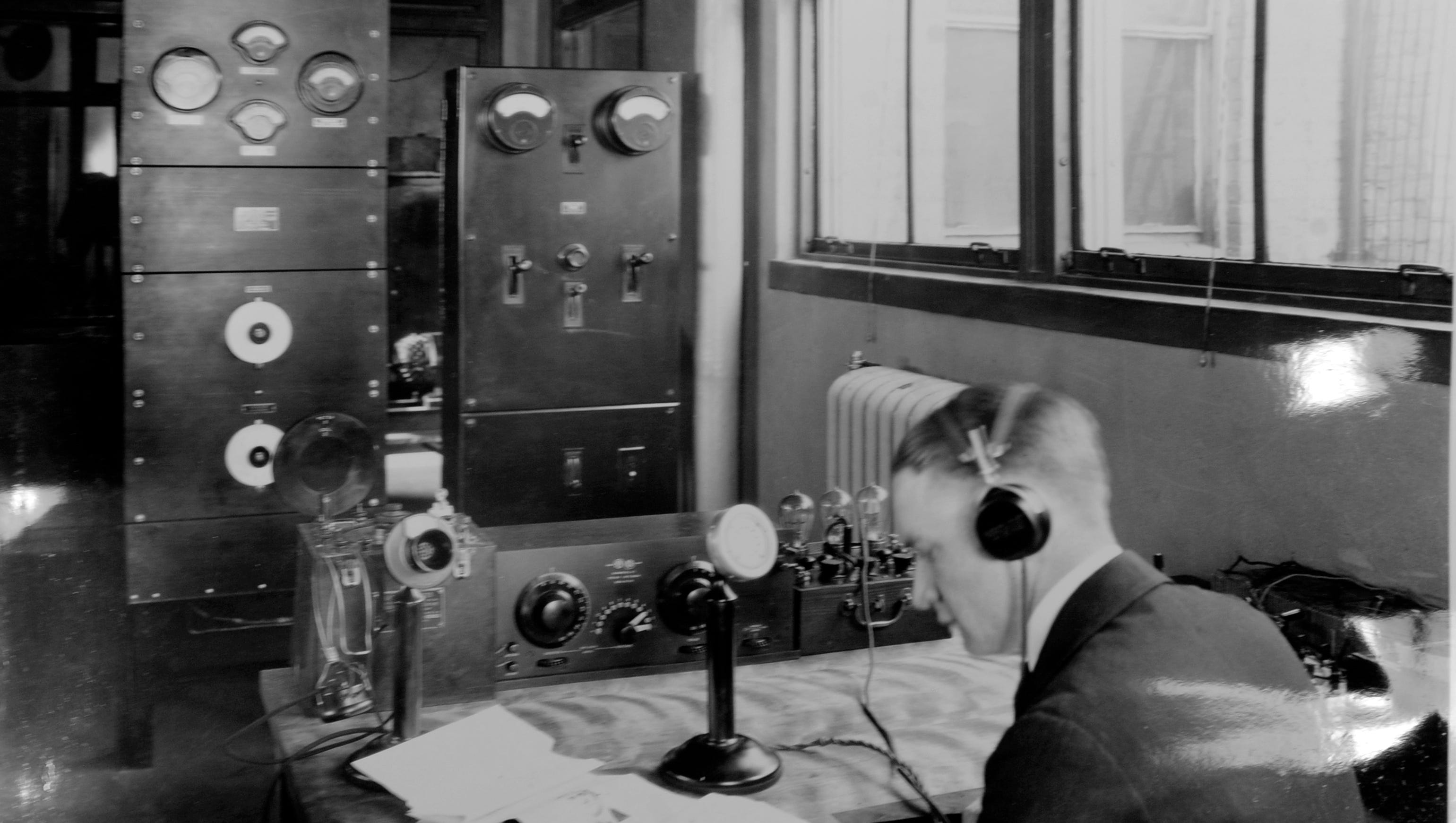
The Detroit News referred to its new station as "The Detroit News Radiophone," and first broadcast election results on Sept. 1, 1920. A year later, the station's first commercial license was issued under new call letters, WBL, and on March 3, 1922 the call letters were changed to WWJ.
The Detroit News Archives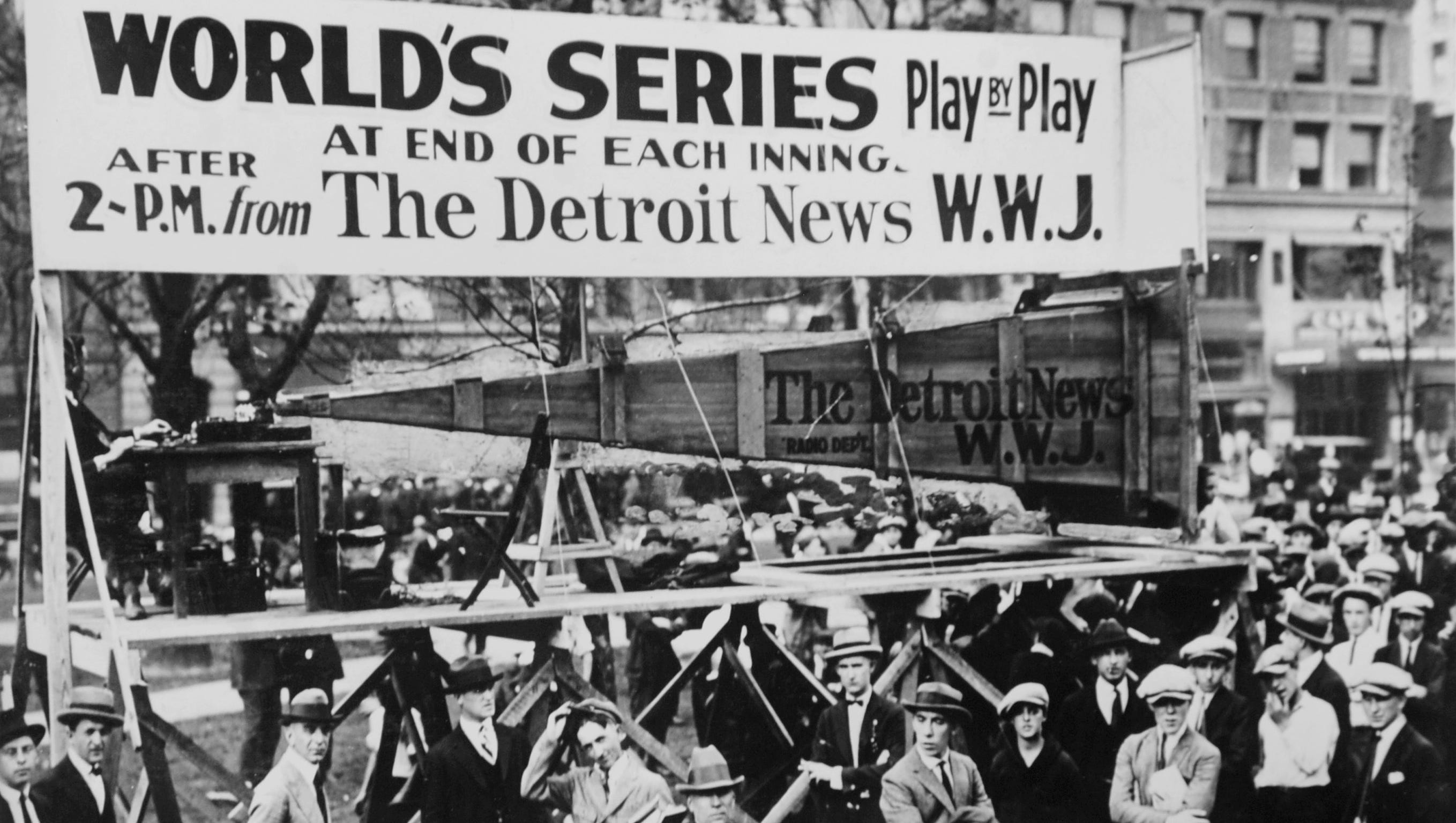
WWJ's first World Series broadcast was in 1922, when the New York Giants defeated the New York Yankees. The play-by-play was recreated at the end of each inning and broadcast through a loudspeaker in Detroit's Grand Circus Park.
The Detroit News Archives
The radio station's antenna stands atop the Detroit News building, 290 feet above street level, in June, 1921.
The Detroit News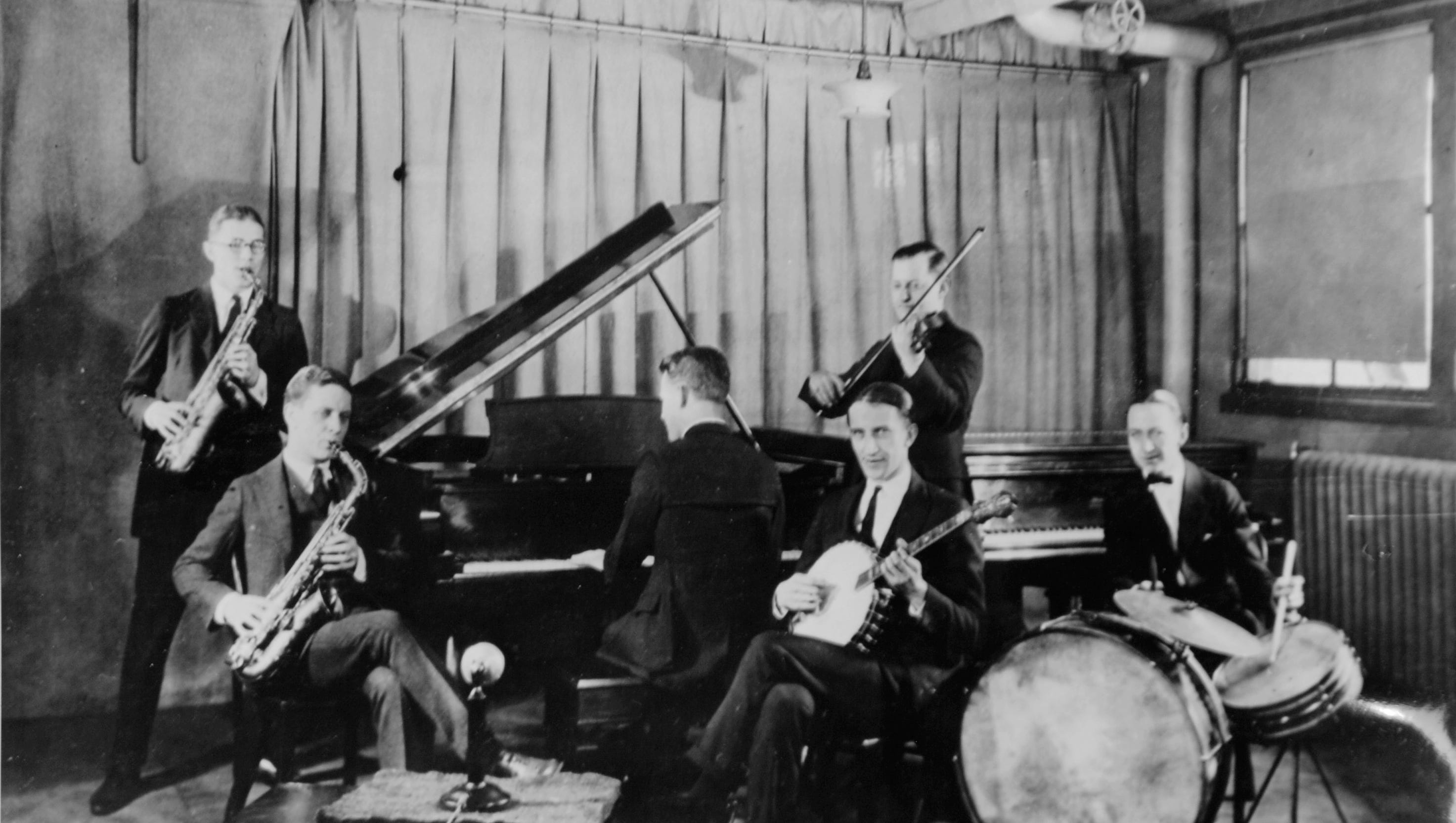
WWJ employed the first studio orchestra, seen here in 1921.
The Detroit News Archives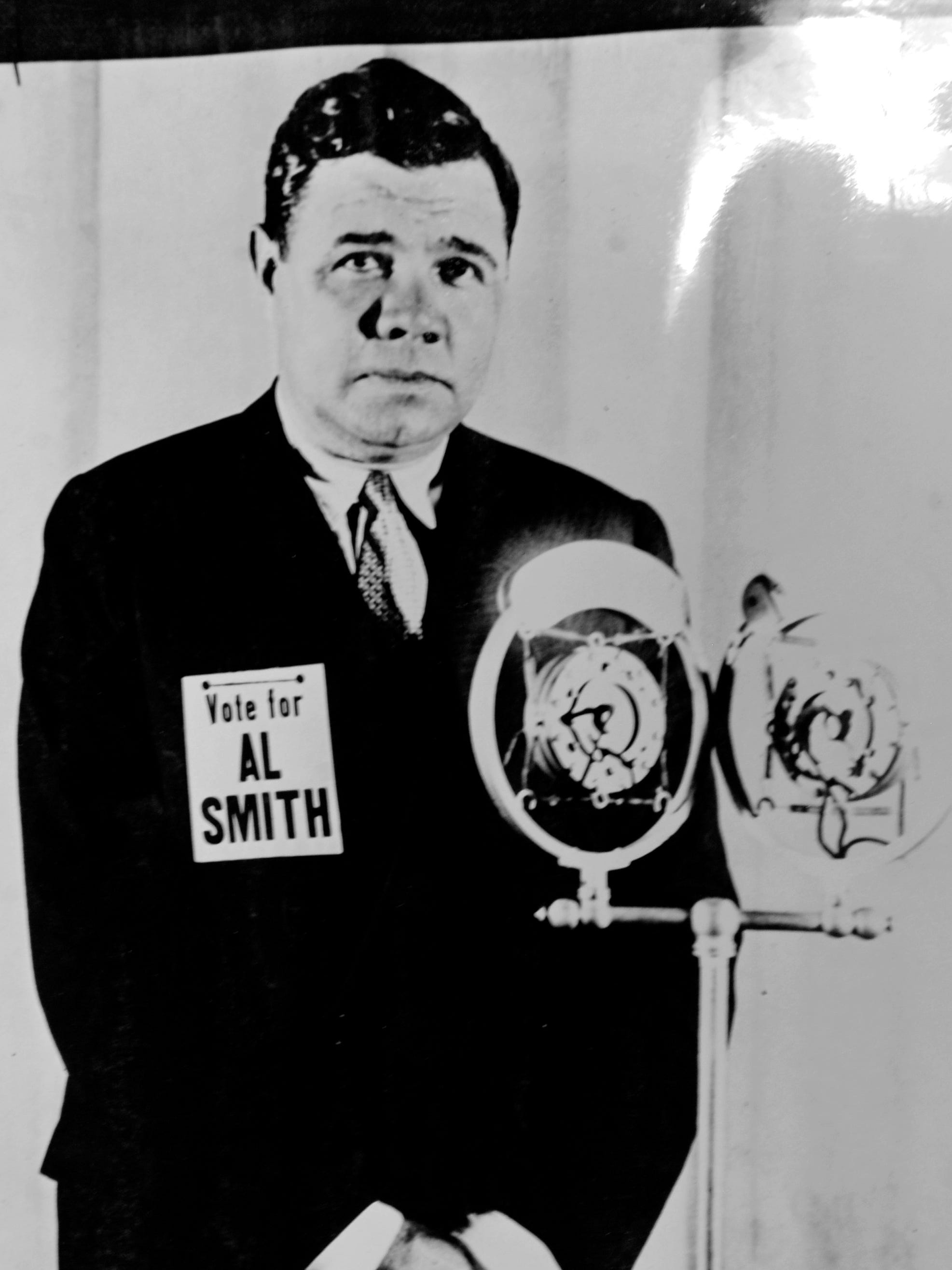
Babe Ruth made his first radio appearance ever on Jan. 31, 1922 on WWJ. Reports said he was in town for a vaudeville engagement at Temple Theater. "Babe Ruth bats .999 by radio-phone" said The Detroit News story.
The Detroit News Archives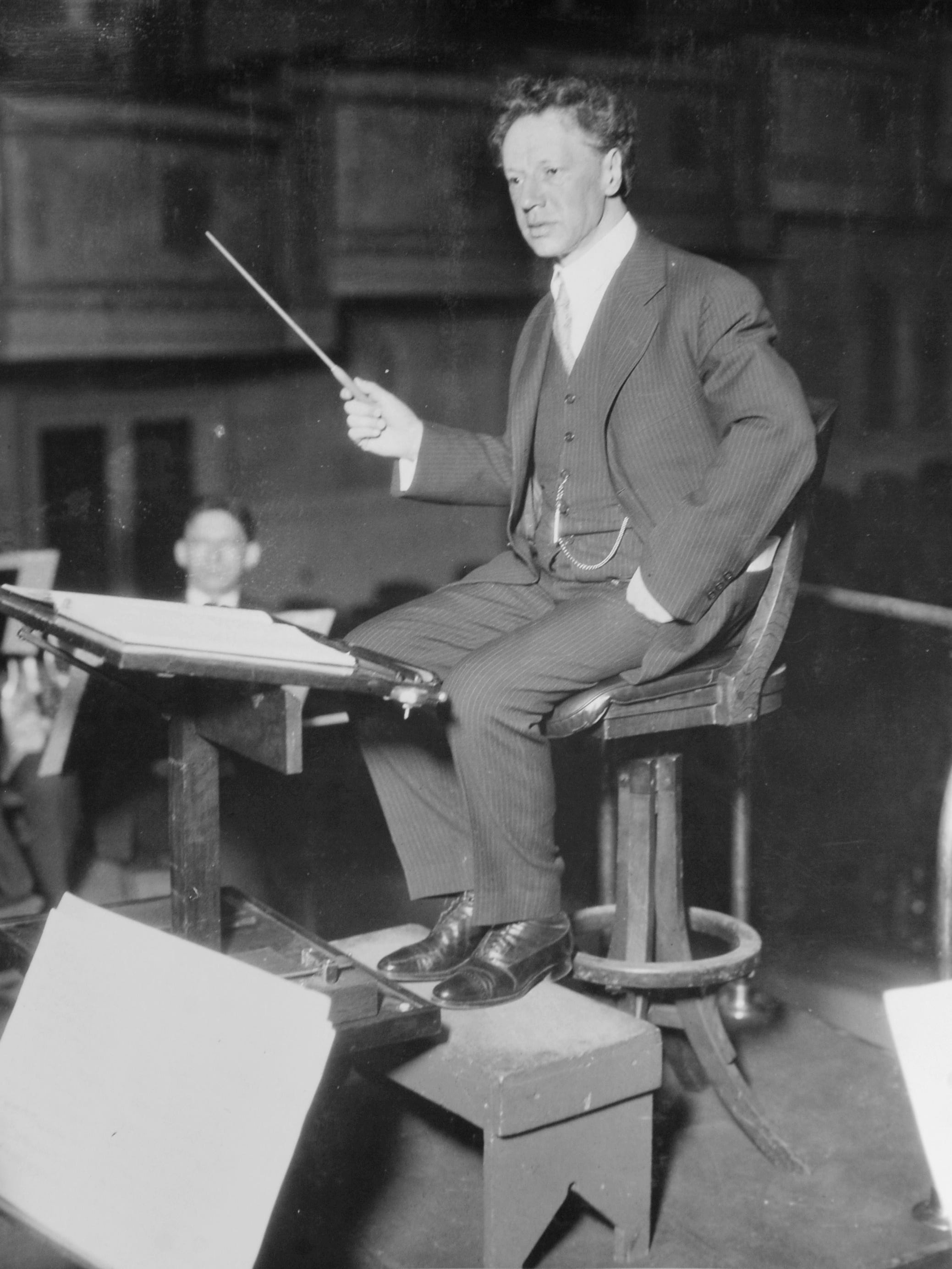
Ossip Gabrilowitsch, the founding director of the Detroit Symphony Orchestra, rehearses for the first broadcast of a symphony orchestra on the radio for WWJ in 1922. The broadcast was the first "commercial" on WWJ and was sponsored by the Detroit Bank.
The Detroit News Archives
Detroit News drama editor Al Weeks was the first newscaster for WWJ. Here he does a "Town Crier" show in 1921.
The Detroit News Archives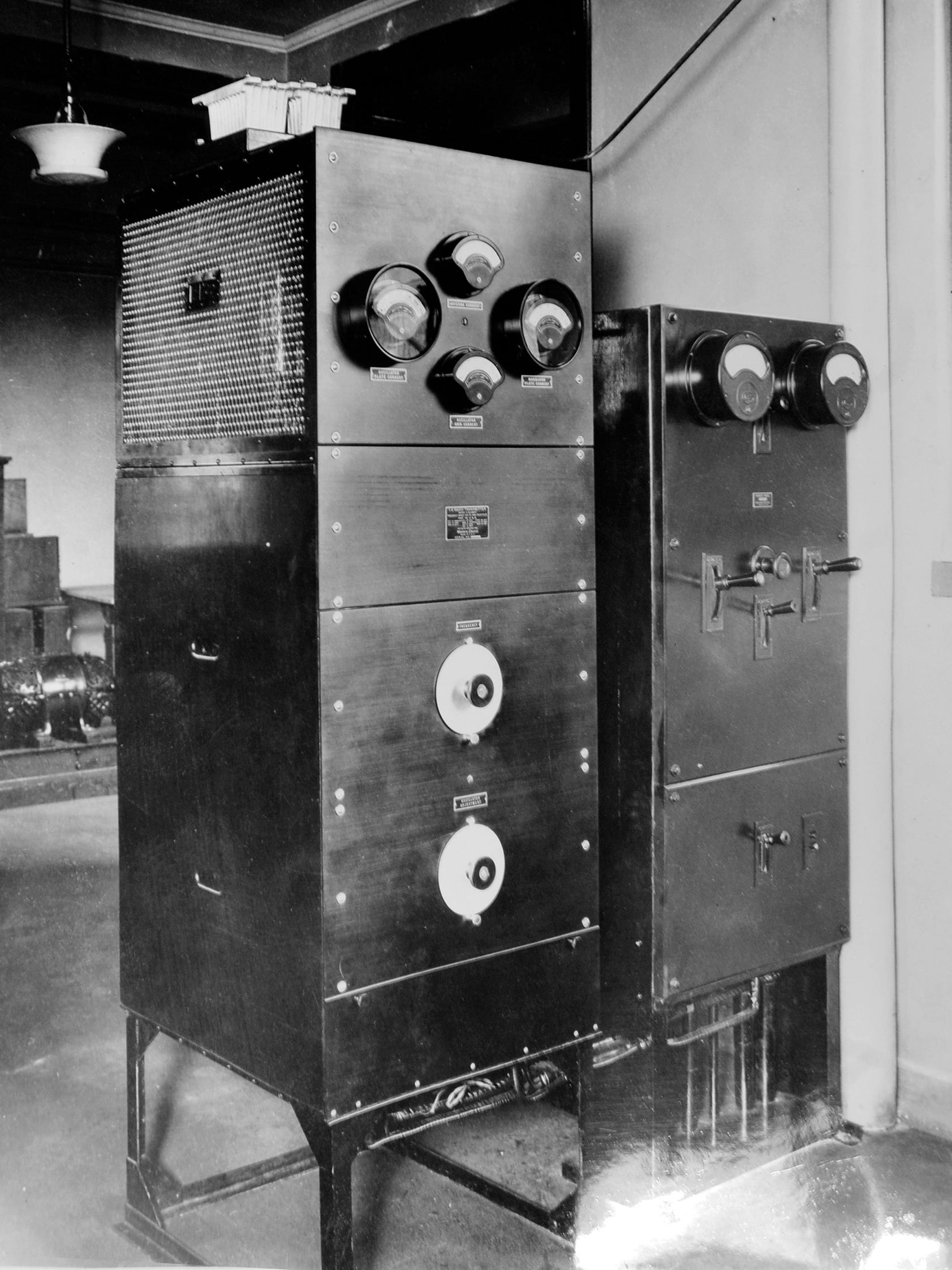
This was the first commercial radio transmitter sold to the broadcast trade by Western Electric. Designated Type 1-A,the 500-watt transmitter was installed by WWJ on Jan. 28, 1922.
The Detroit News Archives
The first broadcast of University Michigan football games occurred in 1923, when Michigan met Wisconsin at Ferry Field, Ann Arbor. At right center is sportscaster E.L. "Ty" Tyson, with his spotter Corley Kirby beside him. Tyson also was WWJ's senior announcer and program director.
The Detroit News Archives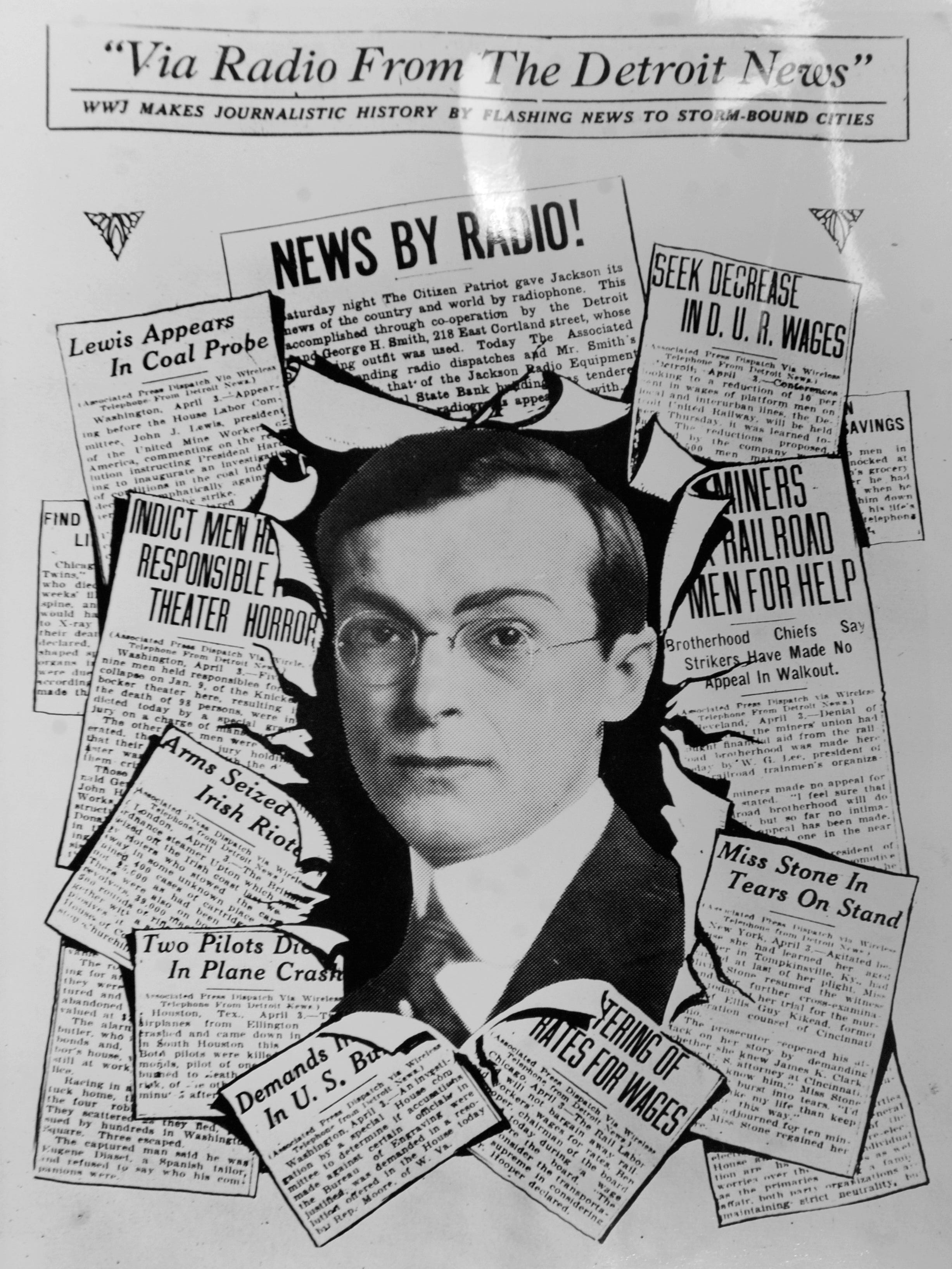
When telephone and telegraph lines were down during a sleet storm in March, 1922, WWJ supplied over-the-air news bulletins to newspapers. "WWJ makes journalistic history by flashing news to storm-bound cities," The Detroit News trumpeted. At center is David Wilkie, the Detroit correspondent of the Associated Press, who wrote the news bulletins.
The Detroit News Archives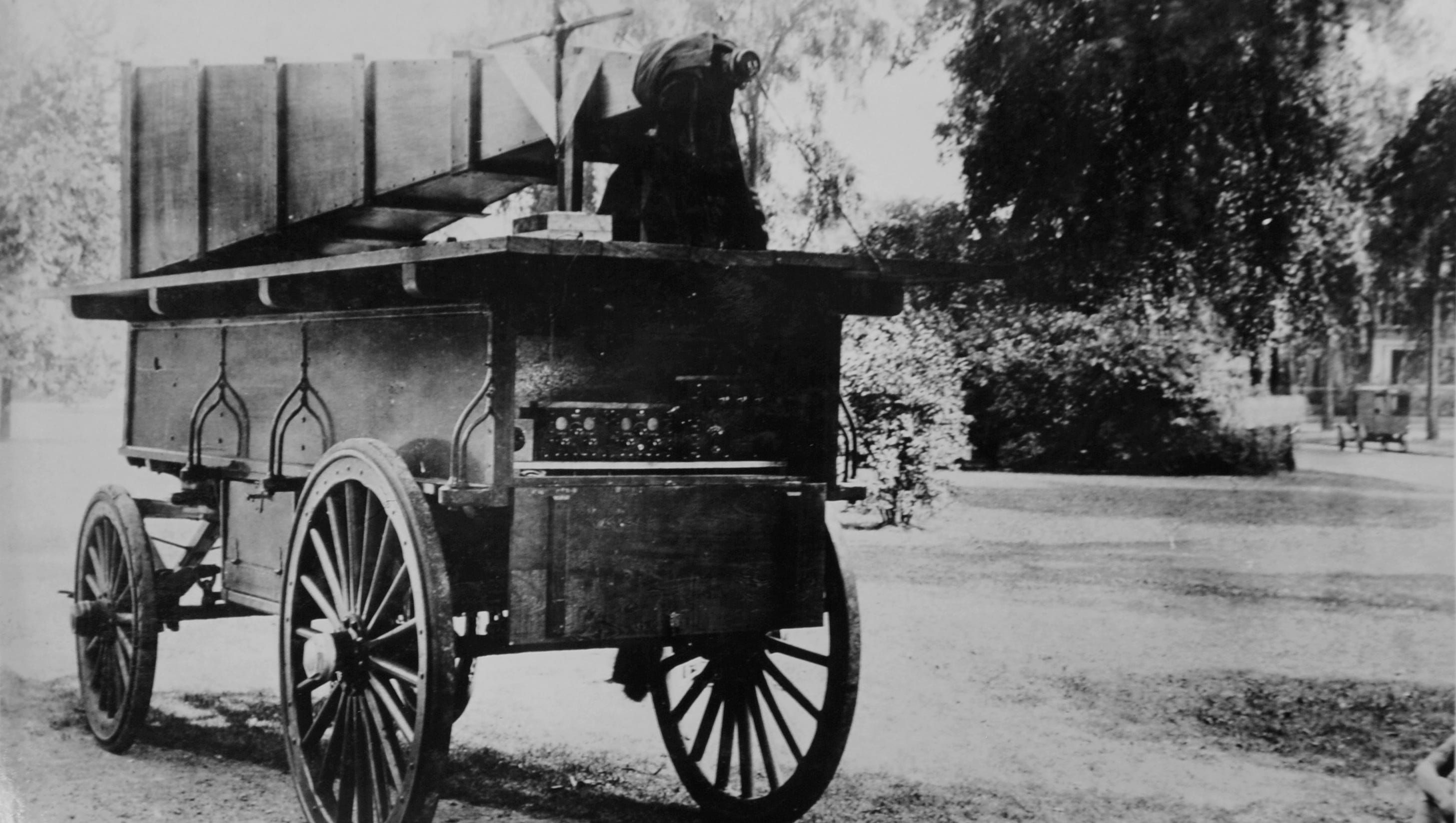
In a Detroit park in 1923, a wagon supplied by the Department of Parks and Boulevards was rigged with equipment to reproduce a broadcast for the public.
The Detroit News Archives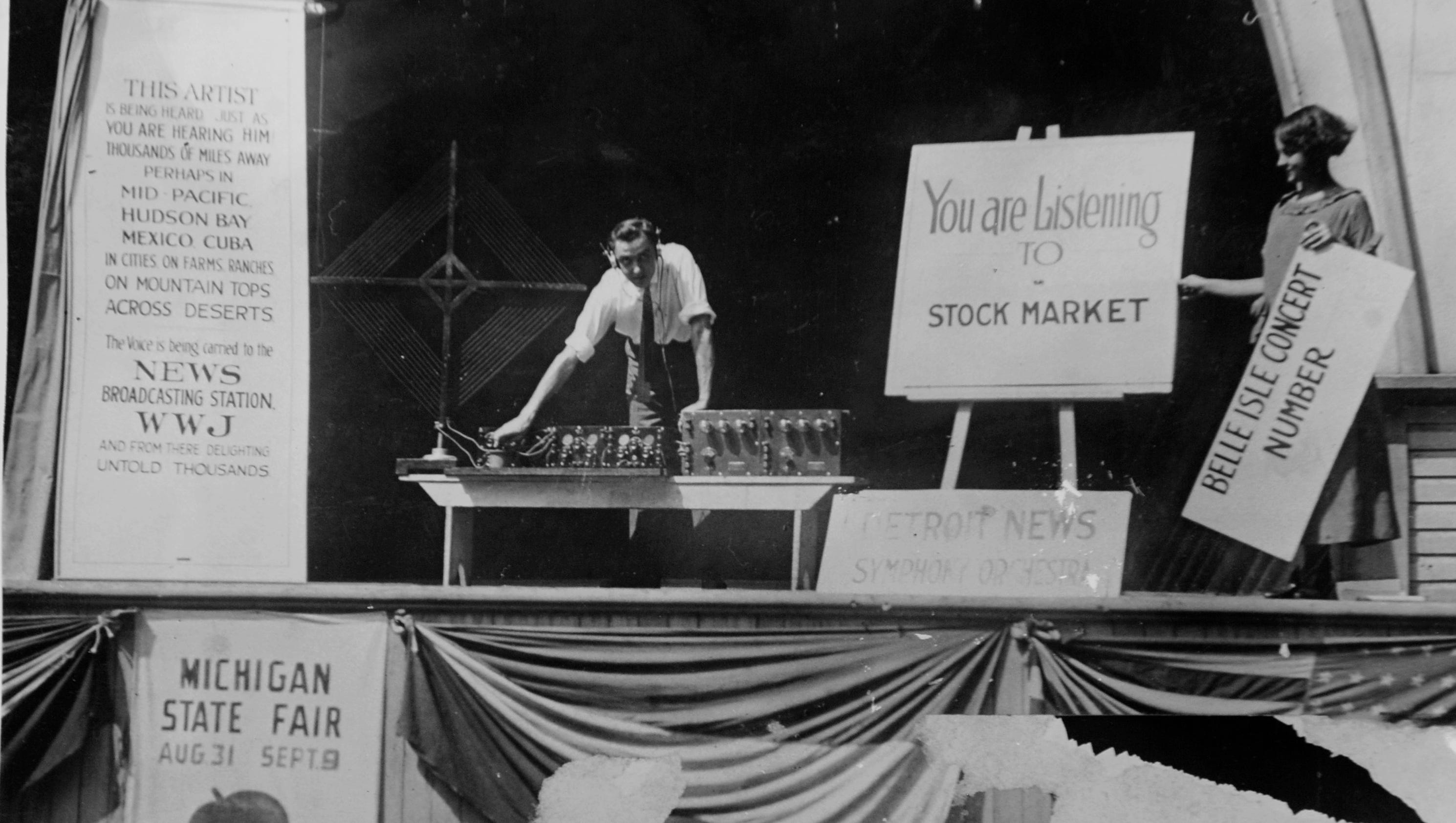
WWJ's display at the Michigan State Fair in 1923 explained that the live broadcast was "delighting untold thousands ... thousands of miles away." Without much competition on the airwaves, WWJ's signal could be picked up a long, long way from Detroit.
The Detroit News Archives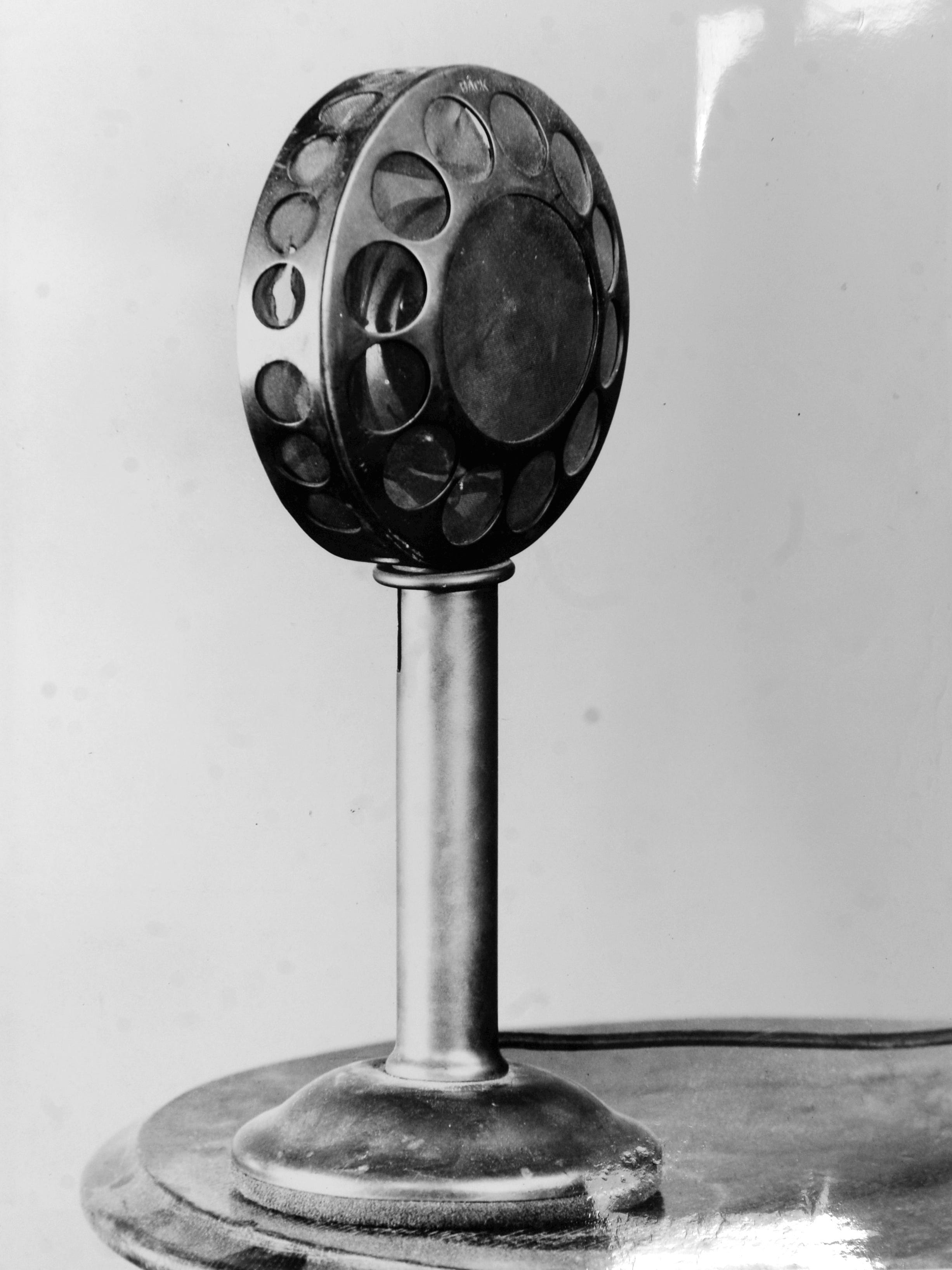
This double-button Western Electric microphone was used by WWJ-The Detroit News in 1923. The newspaper saw the radio station as an adjunct of the newspaper, building good will and promoting The News' brand. The News' practice was to give a 15-minute broadcast at noon, when the first home edition was about to go to press. The intent was to whet the appetite for the full story in The News. After the final edition was on the streets in the evening, another 10-minute broadcast was aired.
The Detroit News Archives
The first morning exercise program on WWJ was conducted by Roy J. Horton, formerly director of the YMCA, on Feb. 23, 1924. Other programs in the 1920s and '30s included news, sports and entertainment shows, a dinner menu broadcast by the News' household editor, tips on home decoration and homebuilding, beauty aids, weather and time reports, luncheon music by leading ensembles and orchestras of Detroit hotels and highway bulletins.
The Detroit News Archives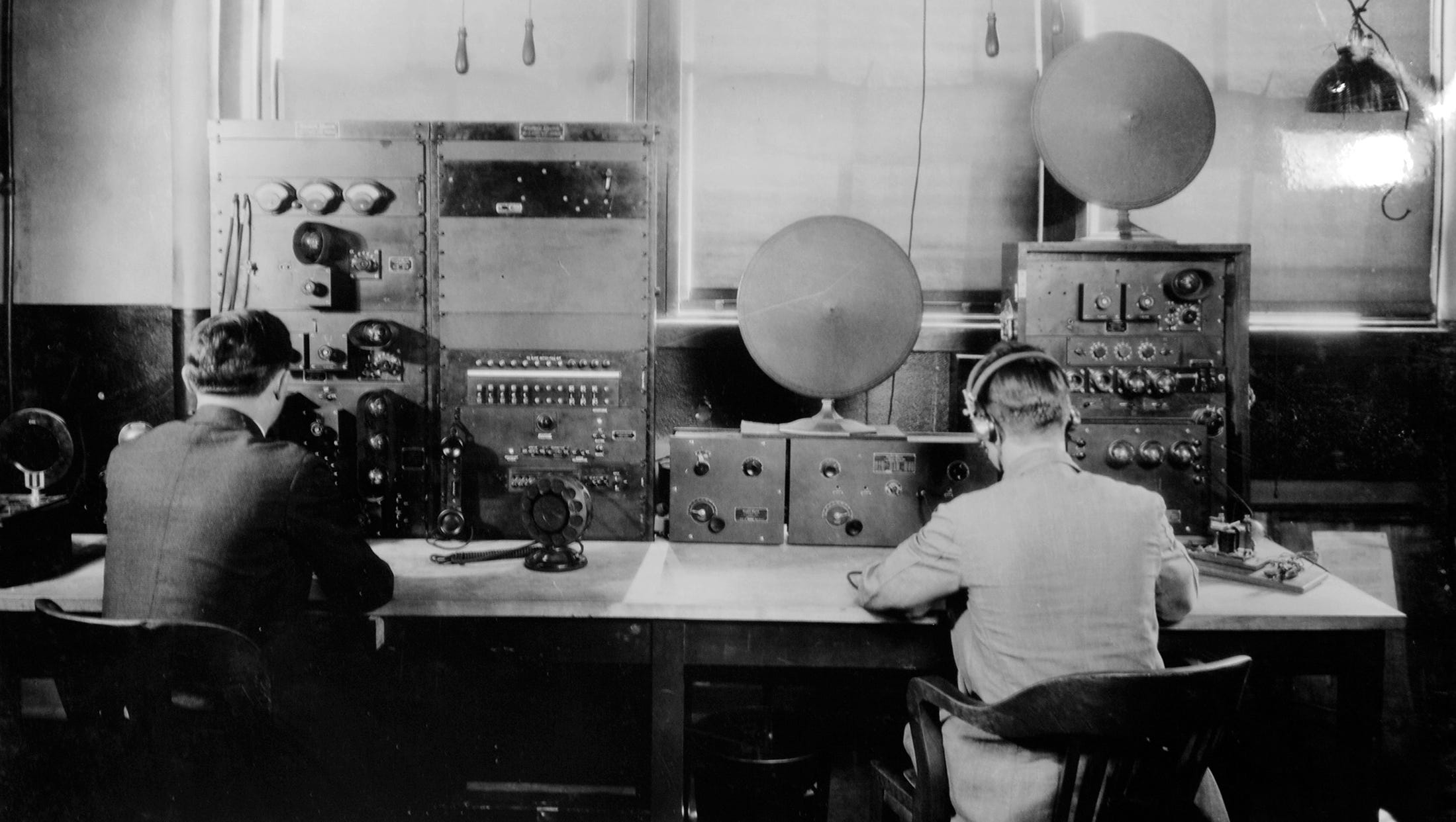
Radio operators Walter Hoffman, left, and Herbert Tank work WWJ's control panel in 1926.
The Detroit News Archives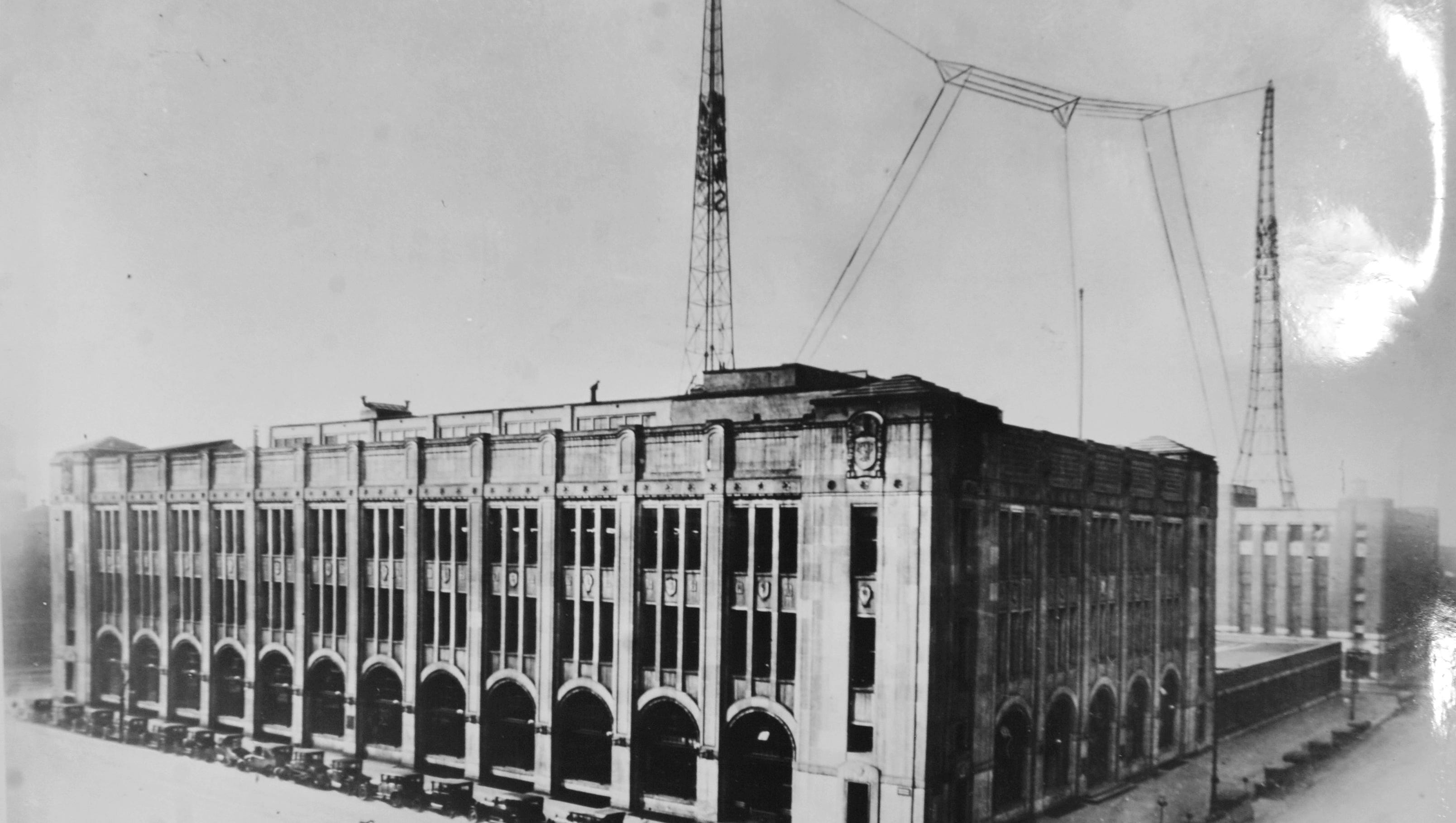
This view of The Detroit News building in November 1926 shows that a second radio tower had been added on top of the parking garage across Third Street. It rose 265 feet above street level.
The Detroit News Archives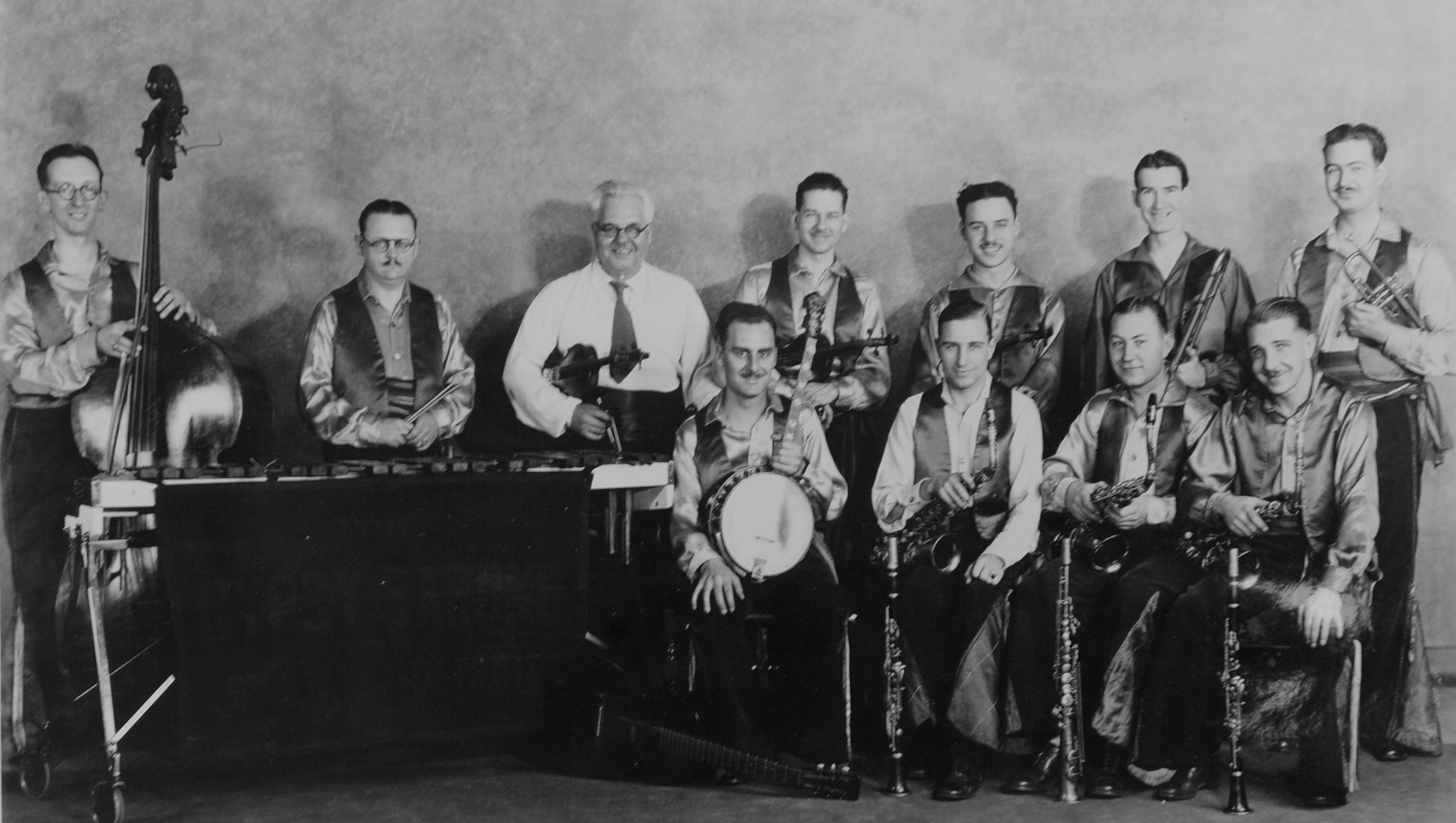
In 1927 the Gypsy Barons Orchestra replaced the WWJ-Detroit News Orchestra. Jack Kneisel, third from left, was its conductor.
The Detroit News Archives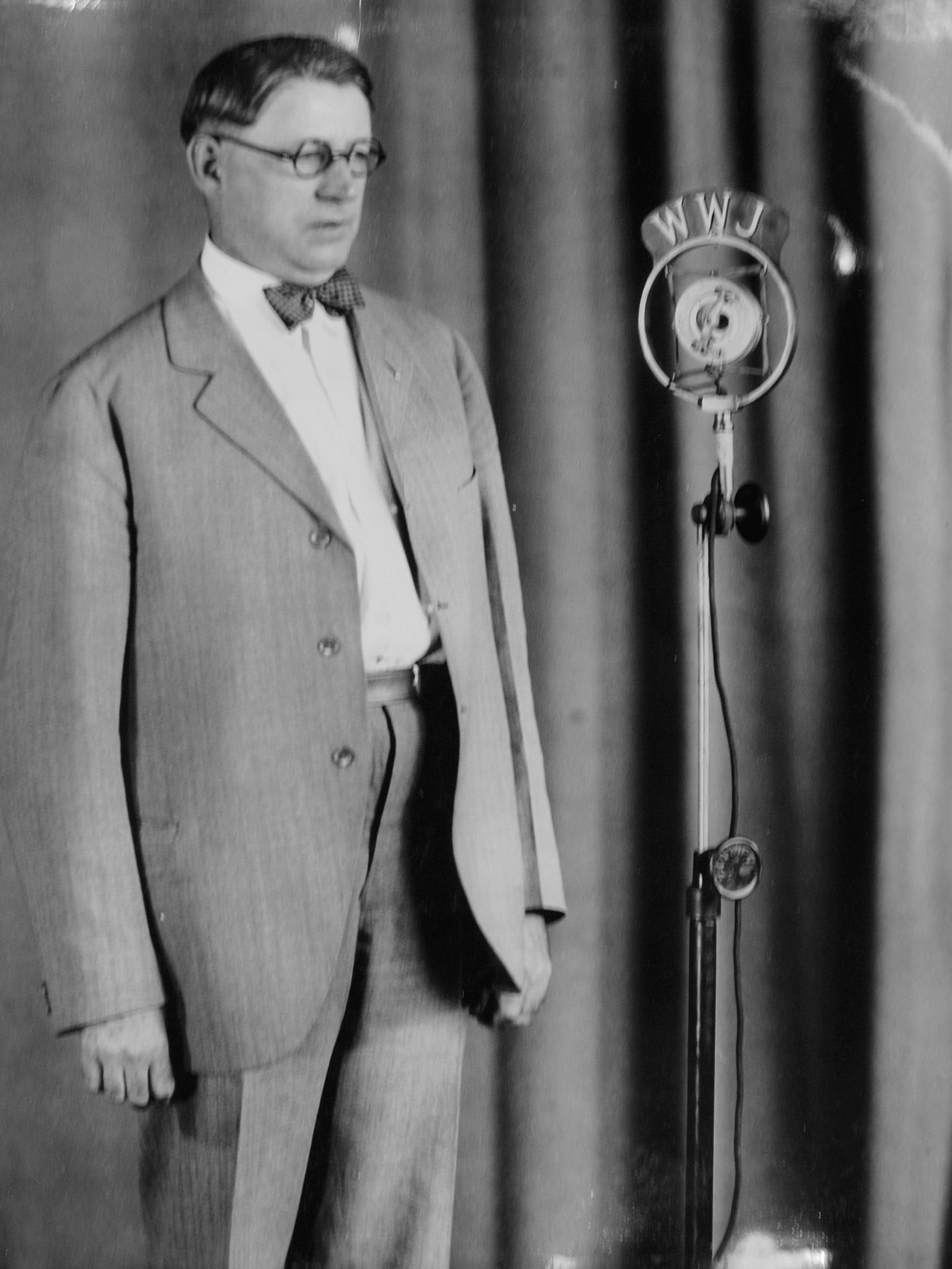
Detroit Mayor Charles Bowles made the first political speech over WWJ's airwaves. Seen here on July 12, 1930, he was fighting a recall election just six months after he had taken office. While he had campaigned as an anti-crime reformer, he fired the police commissioner after the latter had ordered a series of raids. The outraged electorate booted him out of office.
The Detroit News Archives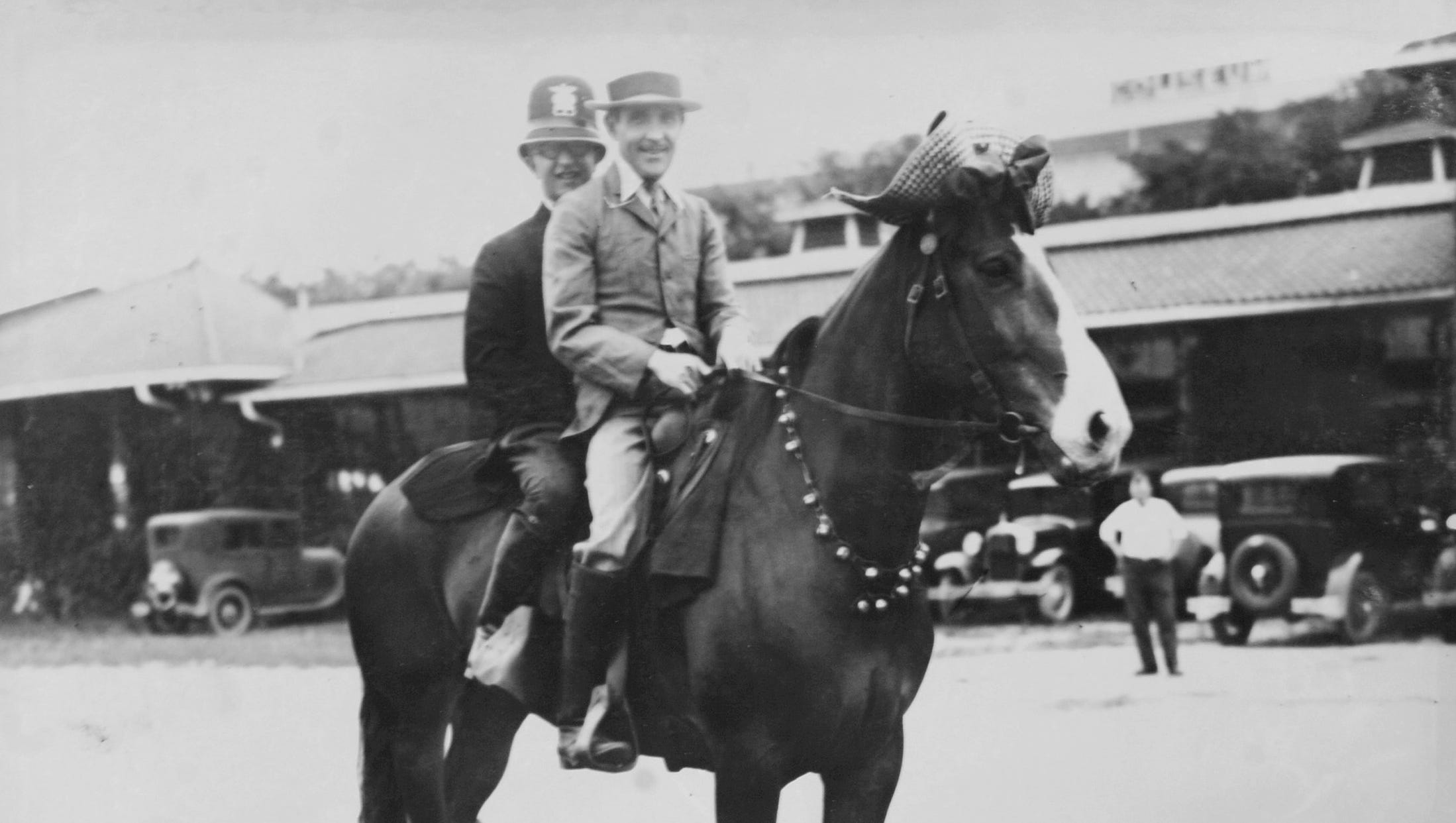
The first early morning comedy team on WWJ -- Arnold Tiemann, left, and Franklyn Greenwood - pose on a horse in 1932.
The Detroit News Archives
In 1931, the station had its first staff dramatist, Rex G. White, right, and its first dramatic director, Wynn Wright, left. At center is manager Jefferson B. Webb.
The Detroit News Archives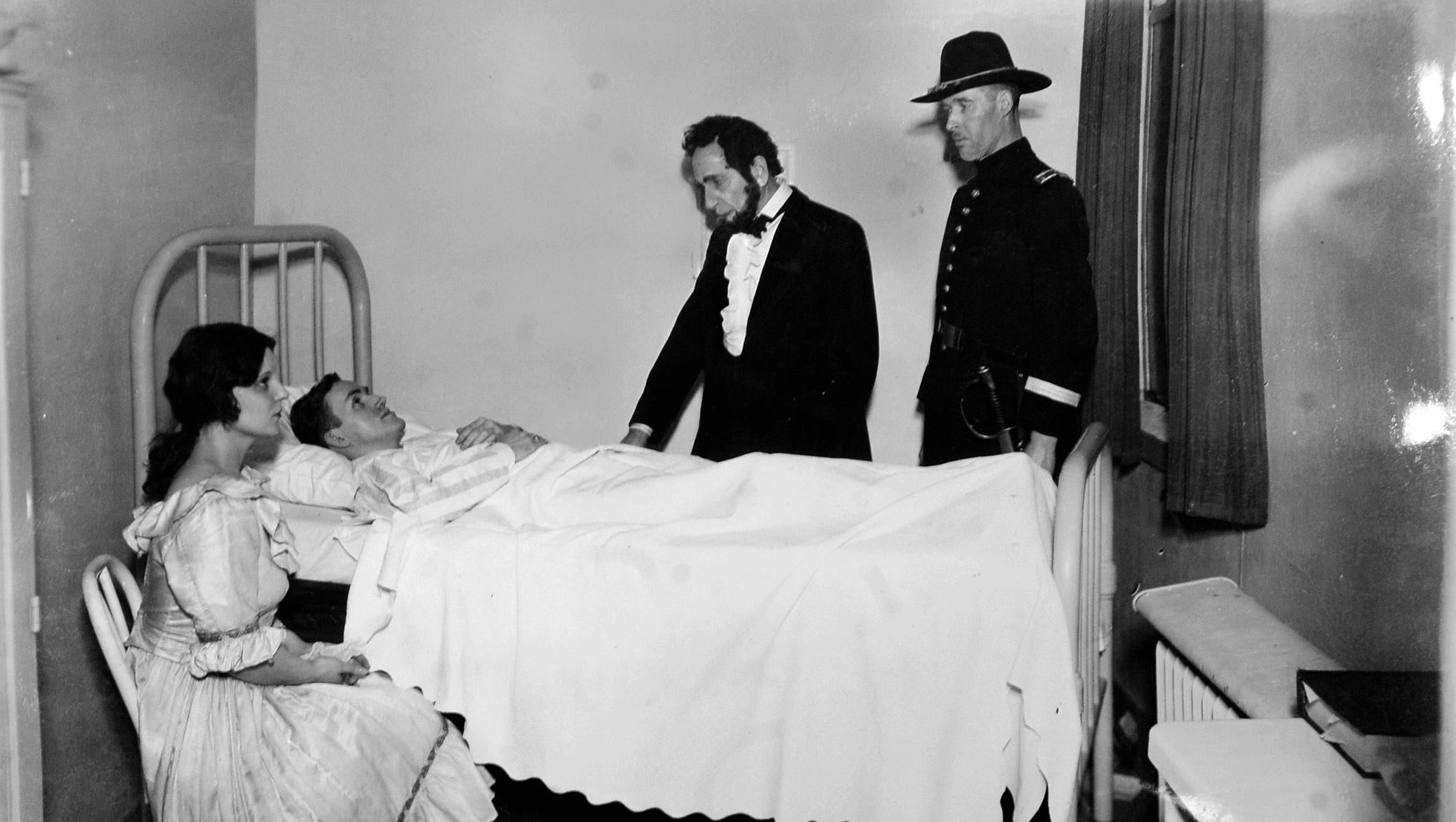
The first original play on WWJ was "Eyes of the Soul," by Rex White, with Helen Colvin, John Prosser, Sam Slade and Herschell Hart, in 1931.
The Detroit News Archives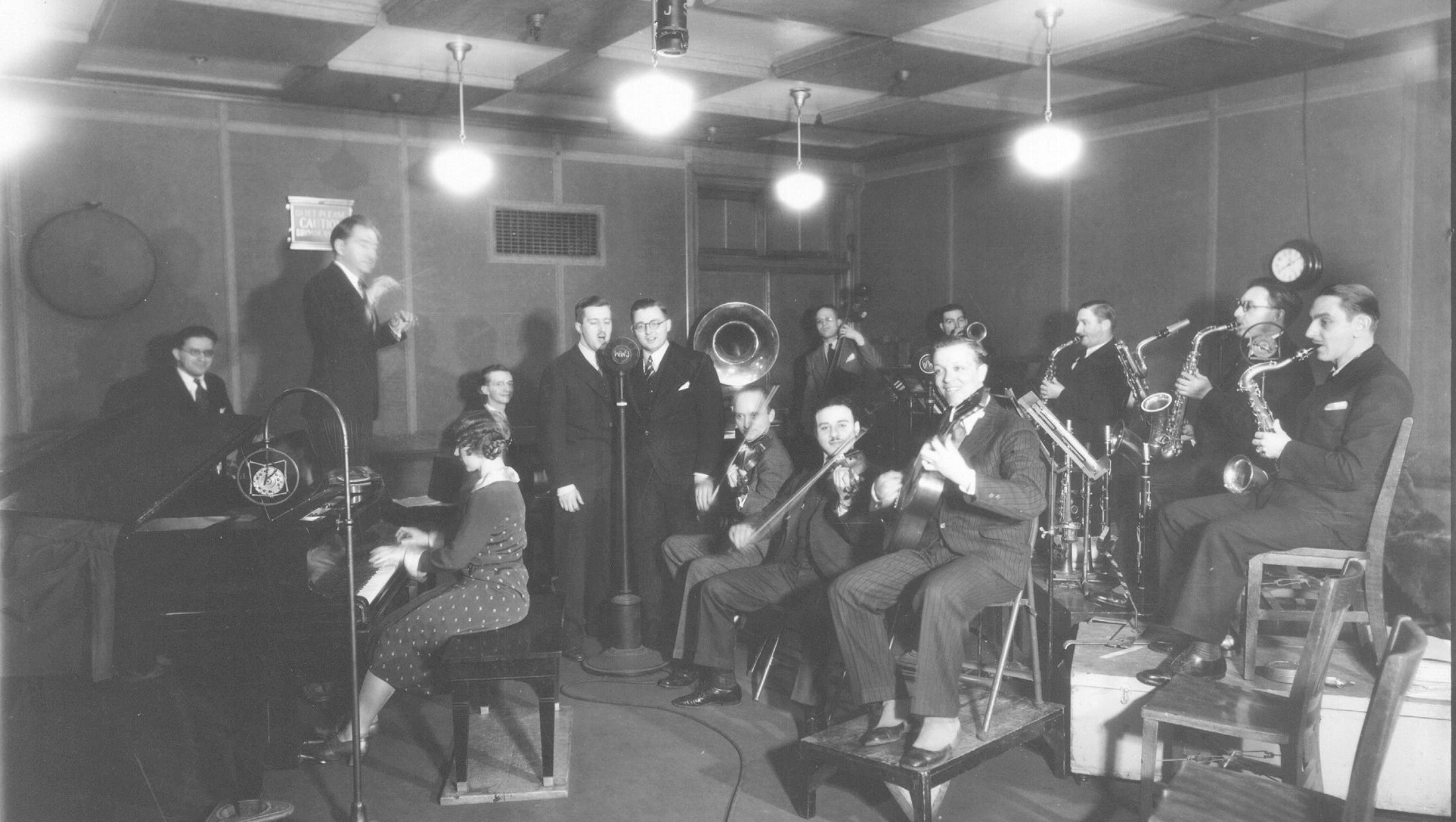
The studio orchestra is in full swing in 1931.
The Detroti News Archives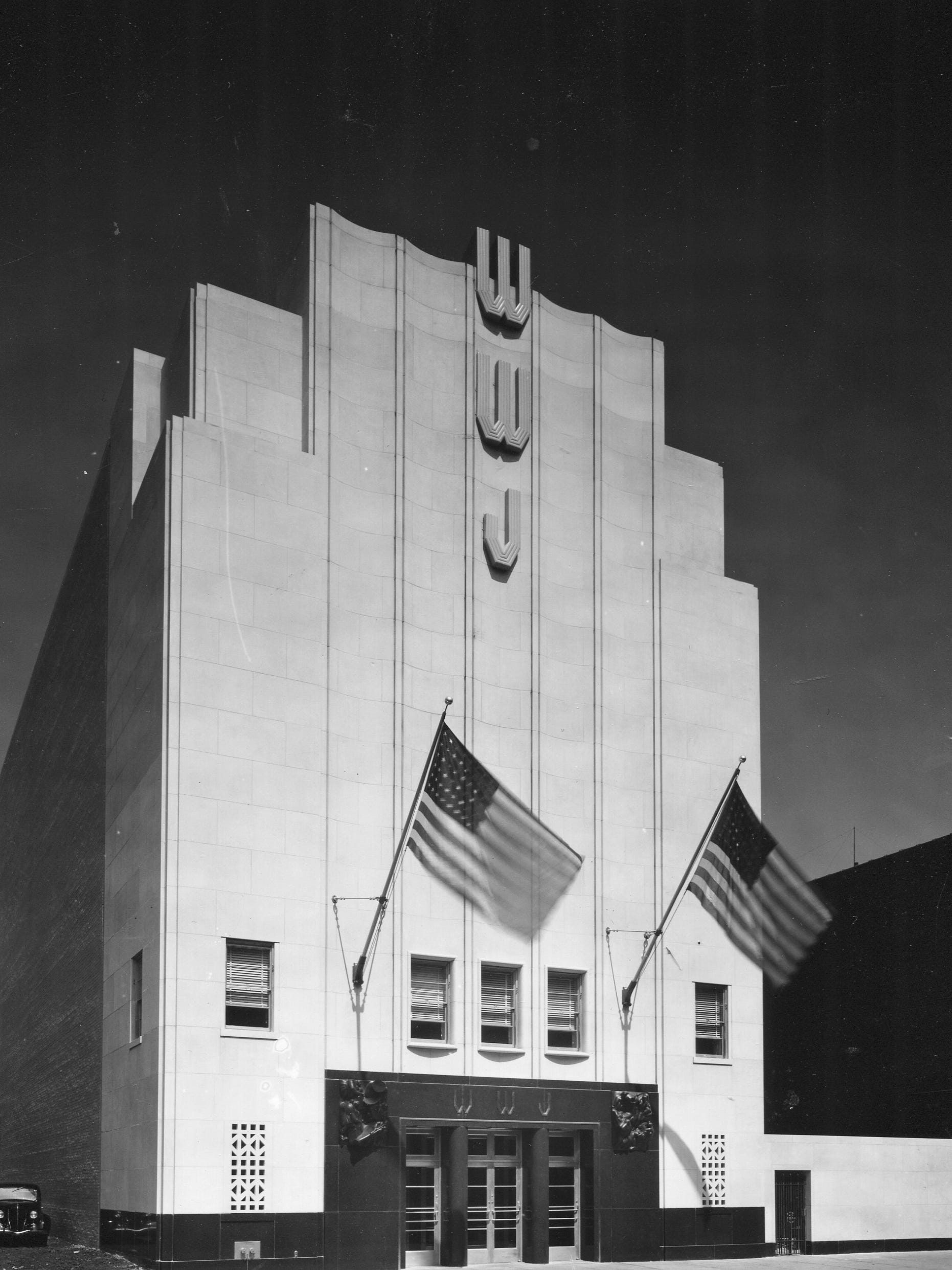
In 1936, a new Albert Kahn-designed building opened to house the WWJ-The Detroit News studios, across Lafayette from the Detroit News building. Its 70-foot-high façade was made of Indiana limestone. In the basement was the Detroit News Home Institute, a women’s activity center featuring five rooms of a modern dwelling to illustrate the principal divisions of the women’s department of The News, and a professional test kitchen.
The Detroit News Archives
Sculptor Carl Milles of Cranbrook Academy of Art created two whimsical plaques for the WWJ building, cut in black granite, to adorn the entrance. One plaque, above, represents a group of musicians and radio entertainers in unconventional attitudes.
The Detroit News Archives
The other plaque depicts radio listeners in varying states of wakefulness and interest - one even lying on his back with feet in air. Albert Kahn characterized Carl Milles as "perhaps the world's greatest living sculptor."
The Detroit News Archives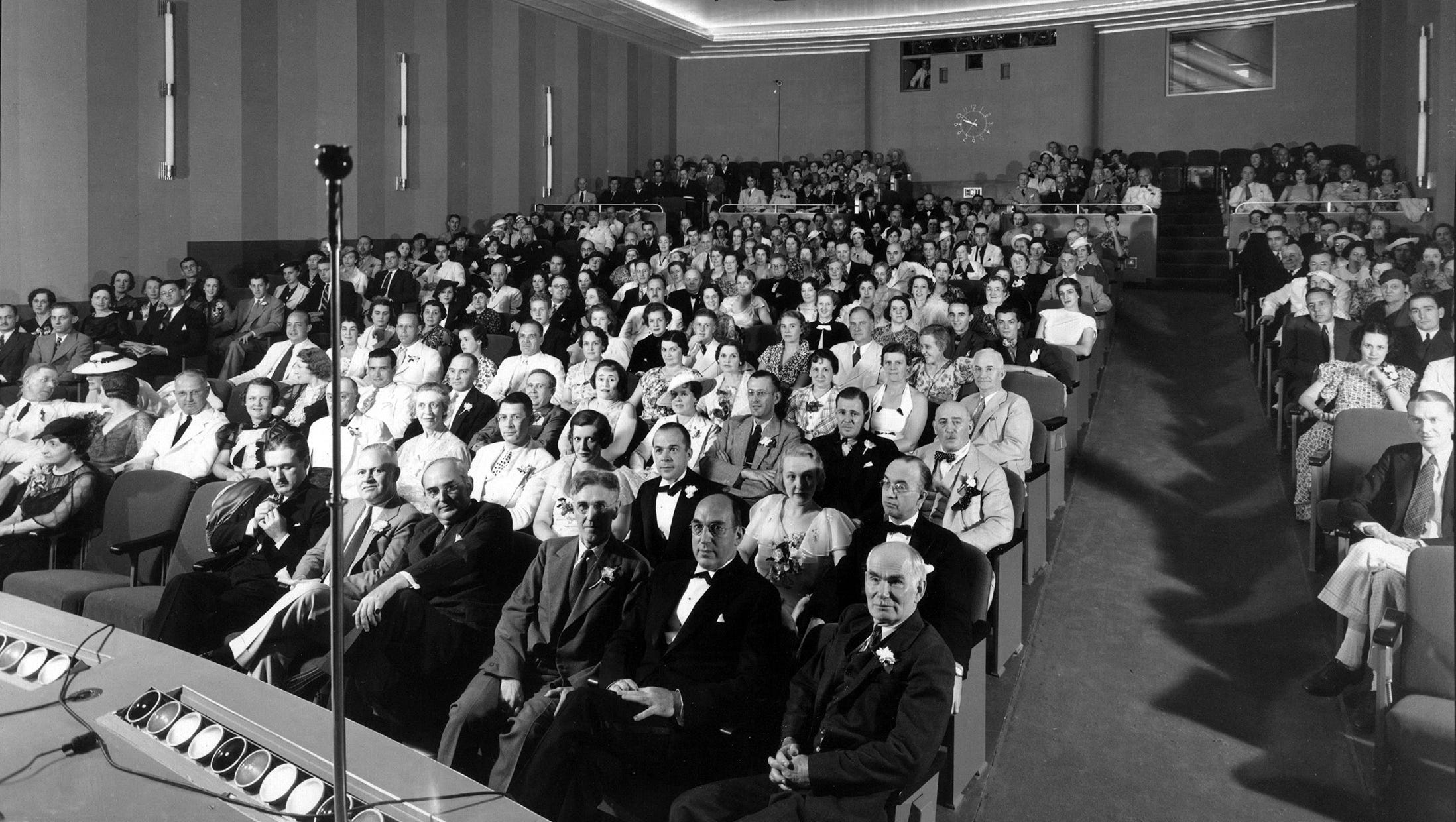
An opening-night crowd fills the 320-seat auditorium at WWJ. Public curiosity about the new studio building was high. Approximately 140,000 people visited in its first year.
The Detroit News Archives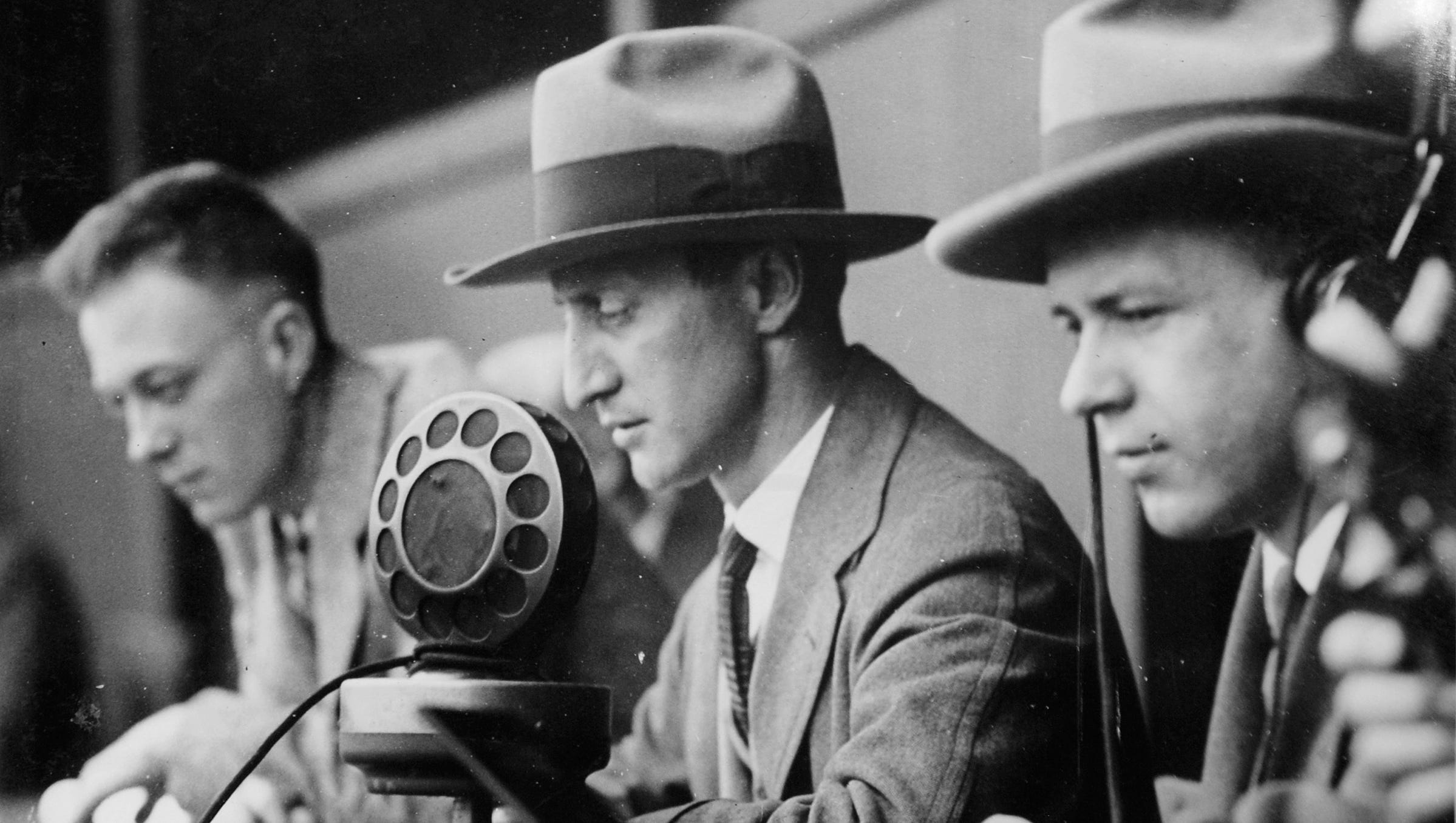
This scene is from the first broadcast of a Detroit Tigers baseball game at Navin Field, on April 19, 1927. From left are Harold Priestley, E. L. "Ty" Tyson and Herbert Tank.
The Detroit News Archives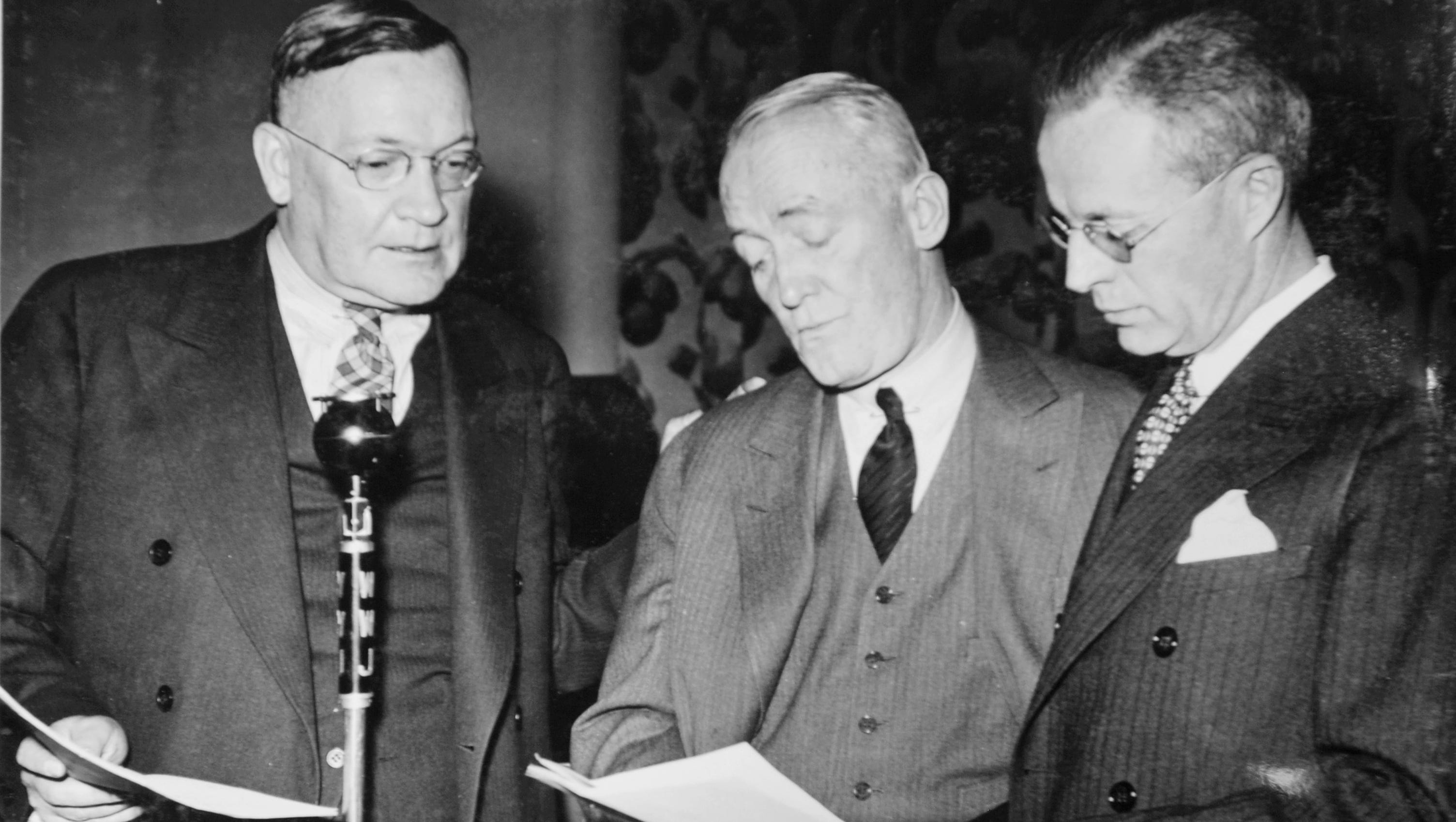
Detroit News columnist George Stark, left, broadcasts an interview with playwright/ composer/ performer George M. Cohan, center, in 1936.
The Detroit News Archives
The Detroit News WWJ Photographic and Radio Mobile Unit was built in 1936. It was a newspaper office and radio broadcasting station on wheels, housing a portable short-wave radio transmitter, a dark room and a photo transmitter. It was built on a large truck chassis with a specially designed body (painted in Detroit News red) and a catwalk for photographers that extended the length of the roof.
The Detroit News Archives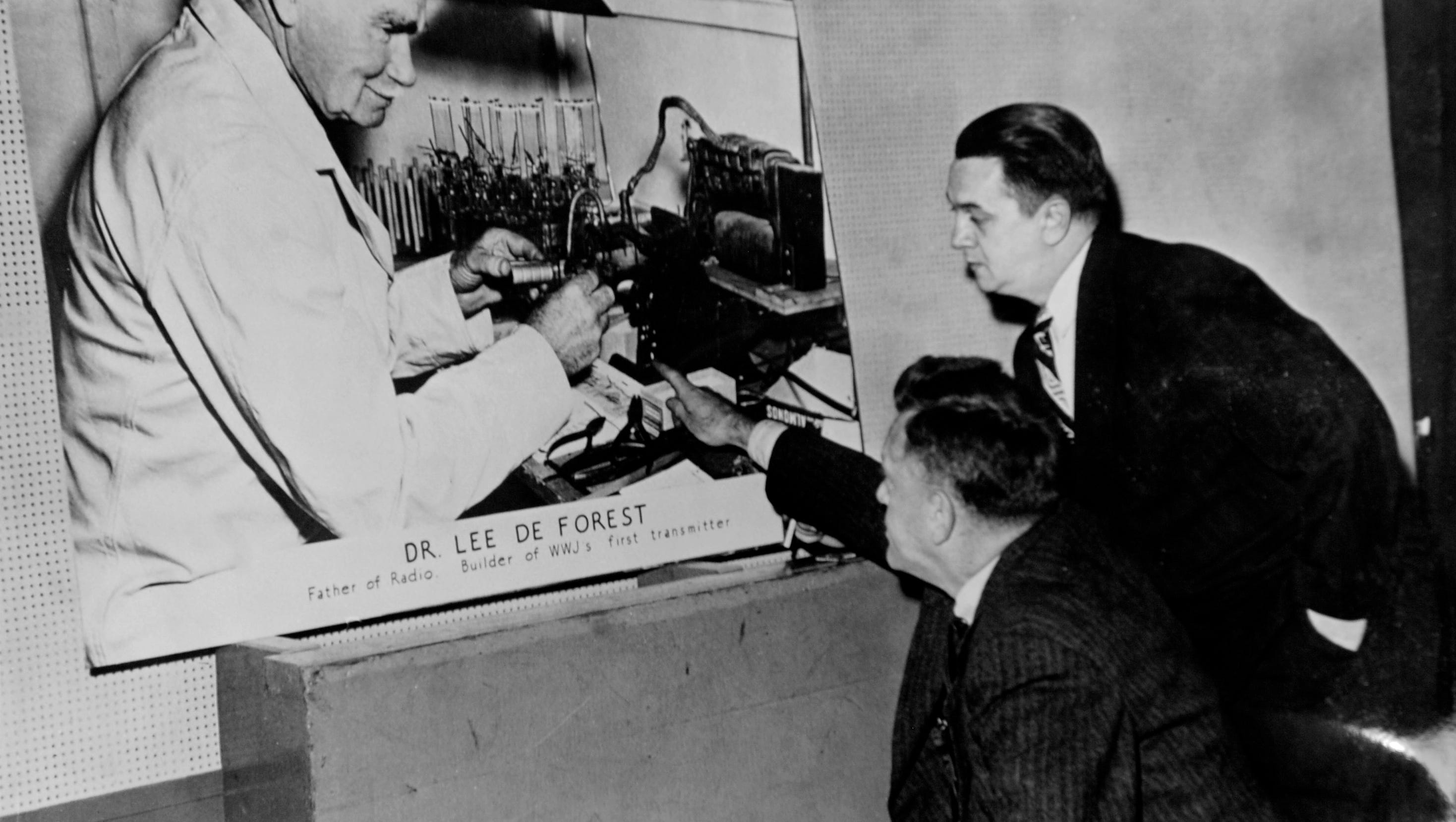
Dr. Lee de Forest, a pioneer in radio and motion picture sound technology, built the first transmitter for The Detroit News.
The Detroit News Archives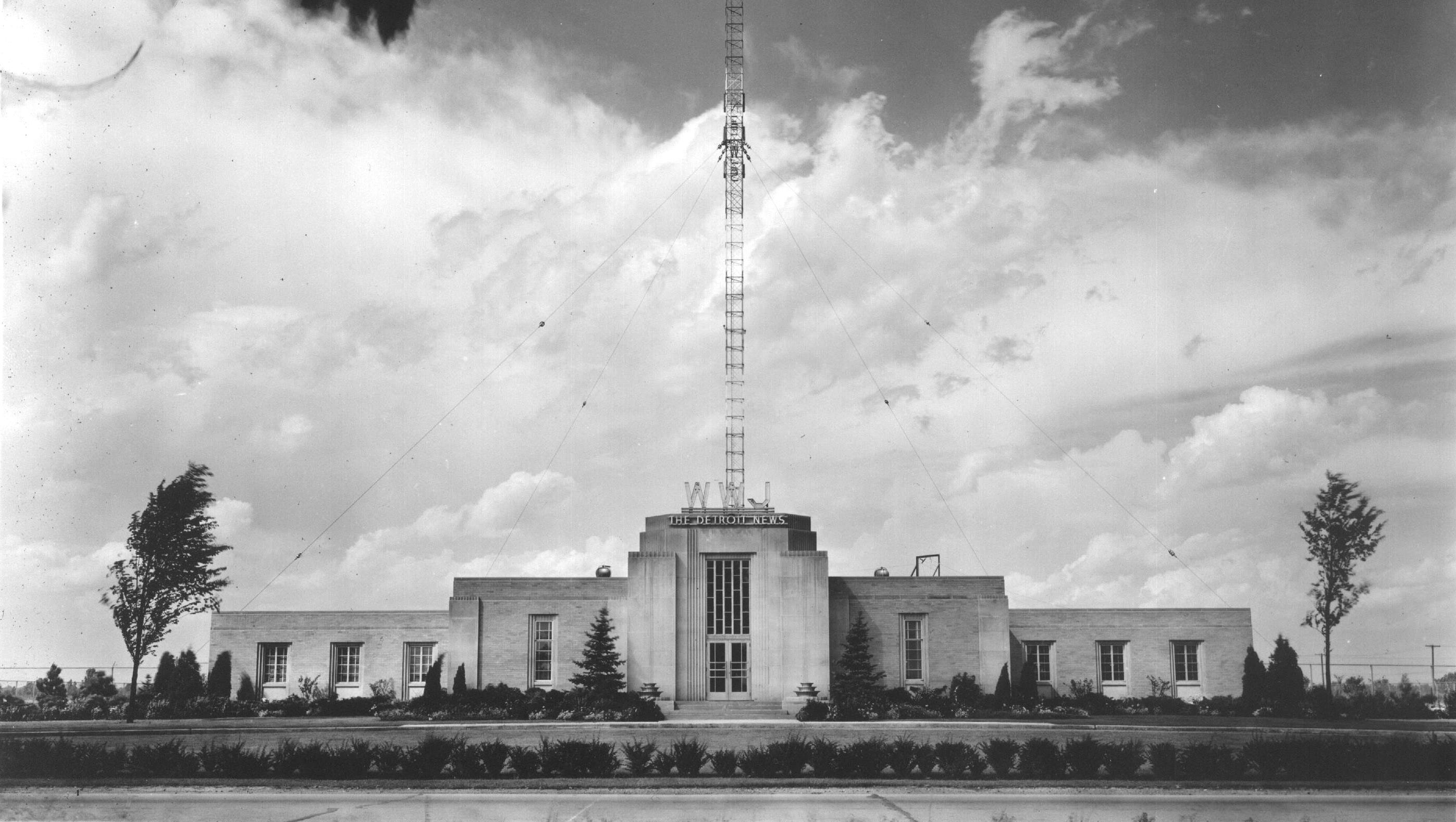
A new transmitter plant opened at Eight Mile and Meyers roads in May, 1936. The new tower stood 400 feet tall and weighed about 42,000 pounds.
The Detroit News Archives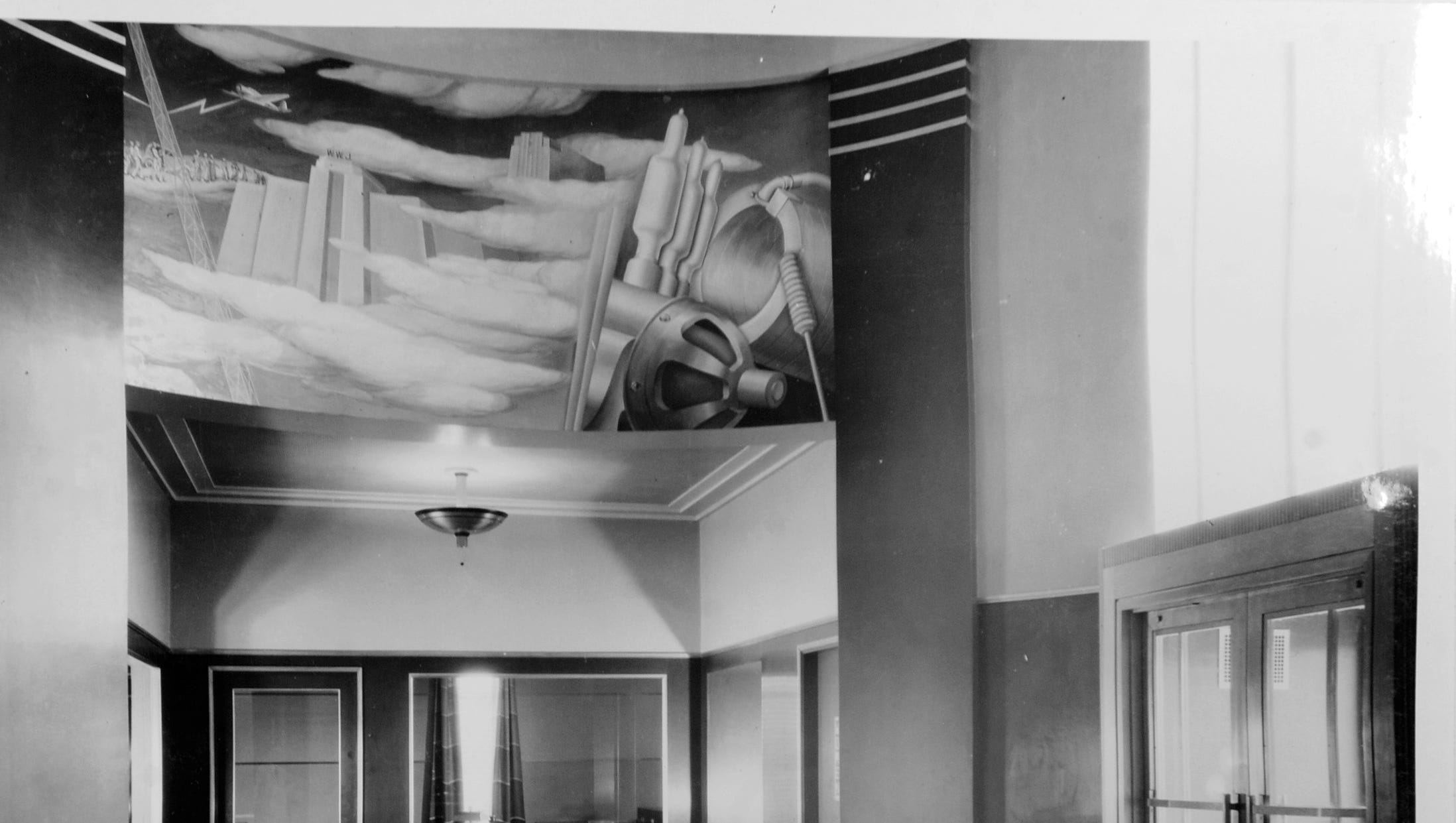
A mural depicting a fanciful scene in the sky adorned the lobby of the transmitter building.
The Detroit News Archives
The transmitter building was awash in Art Deco style.
The Detroit News Archives
A close-up of another part of the mural in the lobby of the transmitter building.
The Detroit News Archives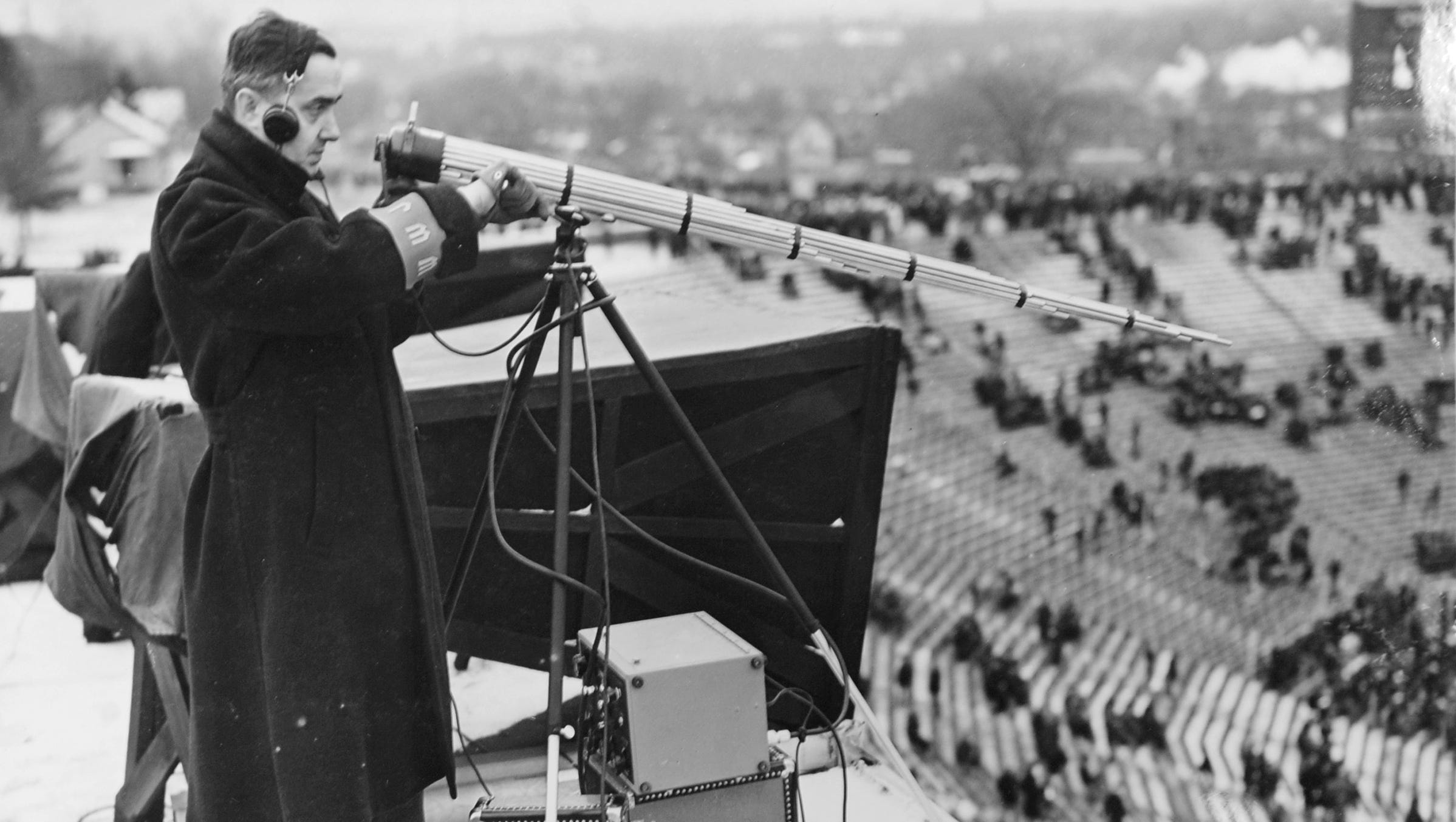
Walter Hoffman operates a machine gun (tubular directional) microphone at a University of Michigan football game on Nov. 24, 1937.
The Detroit News Archives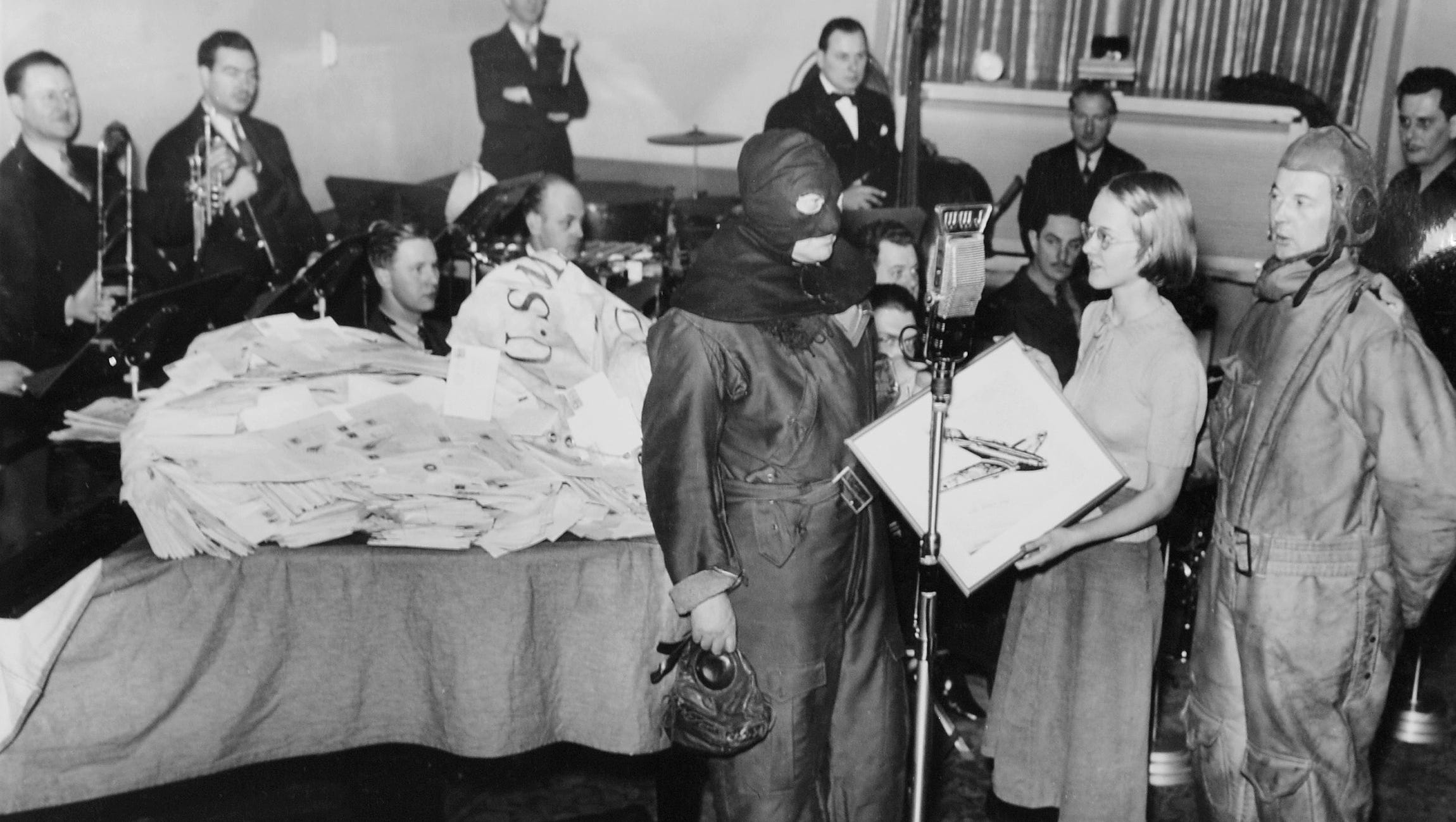
"Black Ace" was the first serial drama by staff writers on WWJ.
The Detroit News Archives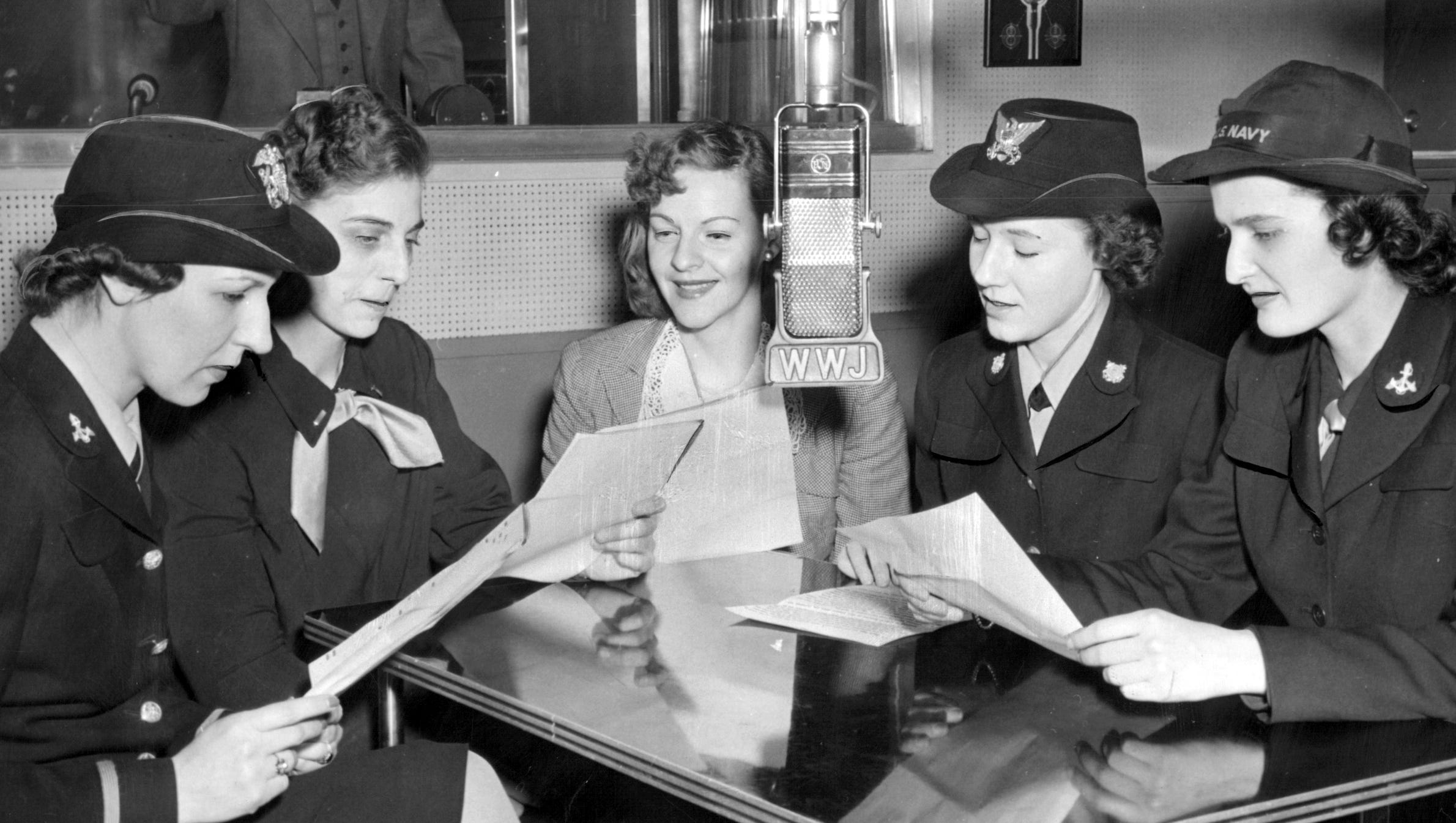
WWJ announcer Gwen Firmin, center, is on the air on March 18, 1943 with four women in the armed services -- Helen Shea, Helen Stewart, Elizabeth Barmes, Mary Jane Dougherty -- in this official Navy photo.
The Detroit News Archives, The Detroit News Archives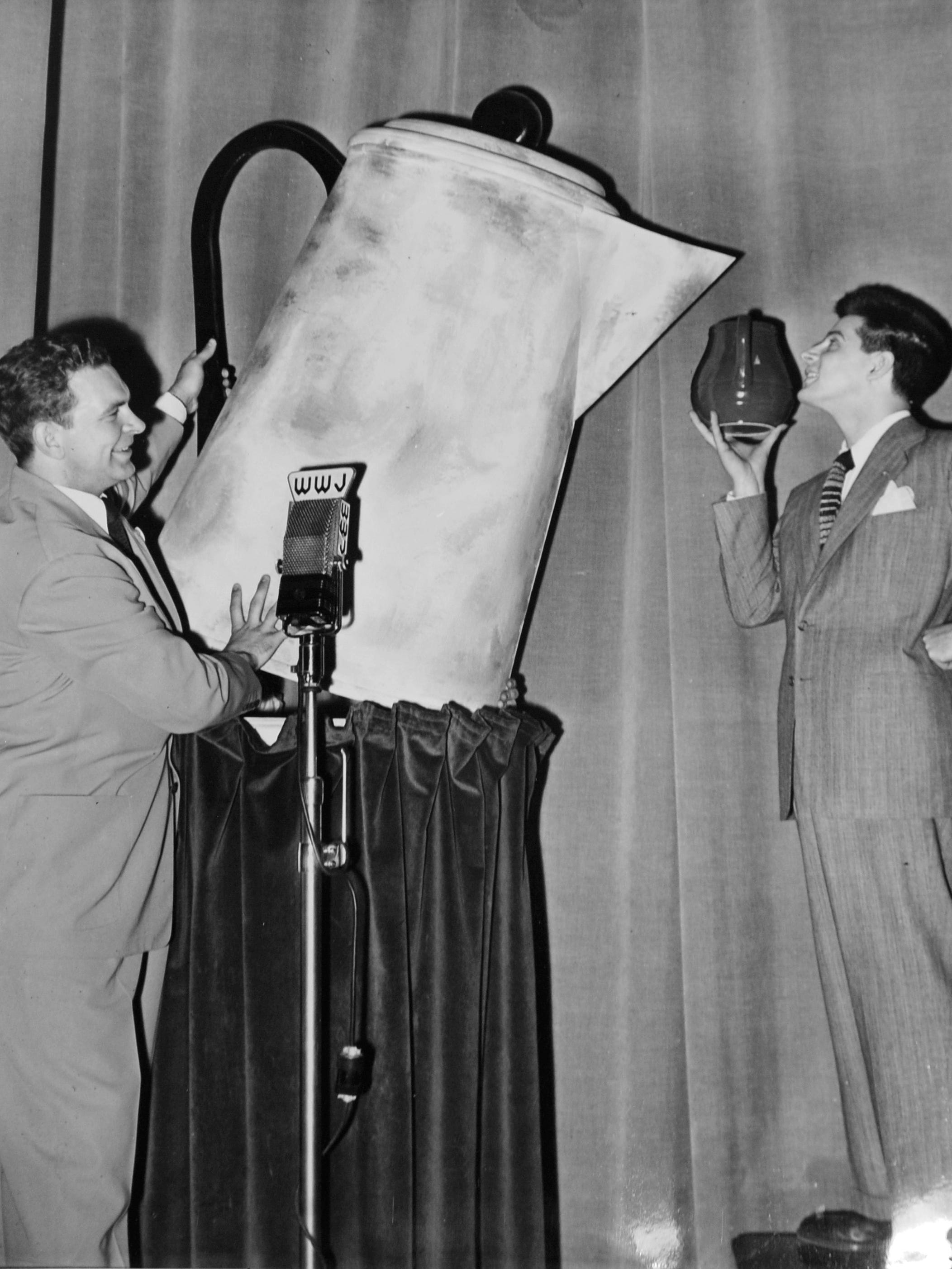
"Coffee Club" was one of the most popular audience participation programs on WWJ in 1945.
The Detroit News Archives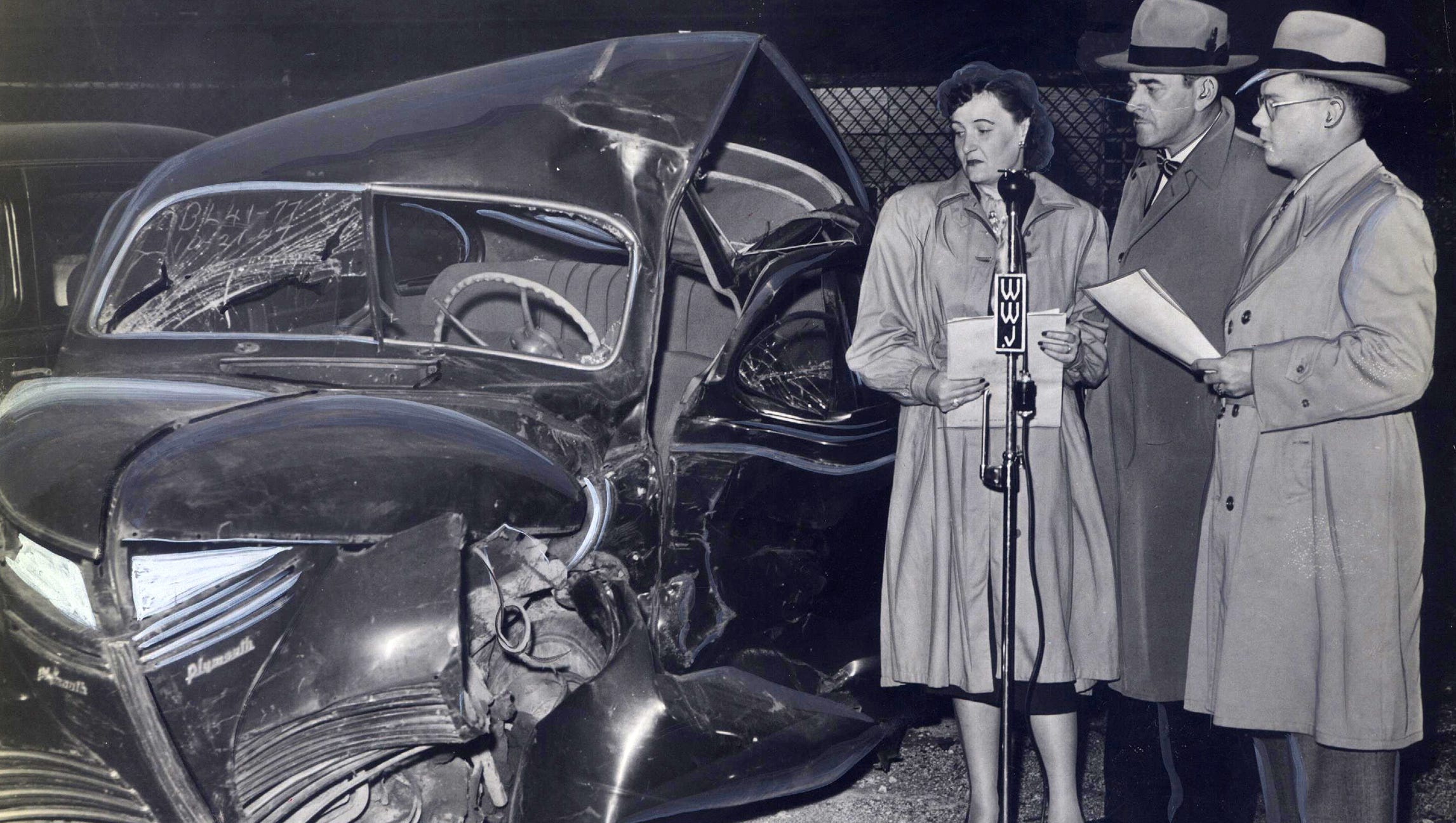
After an accident in 1947, WWJ's Fran Harris, left, and Zach Hill, right, do an interview with James M. Lupton, center, traffic director of the Detroit Police Dept., at the city's auto pound at the foot of Adair Avenue.
The Detroit News Archives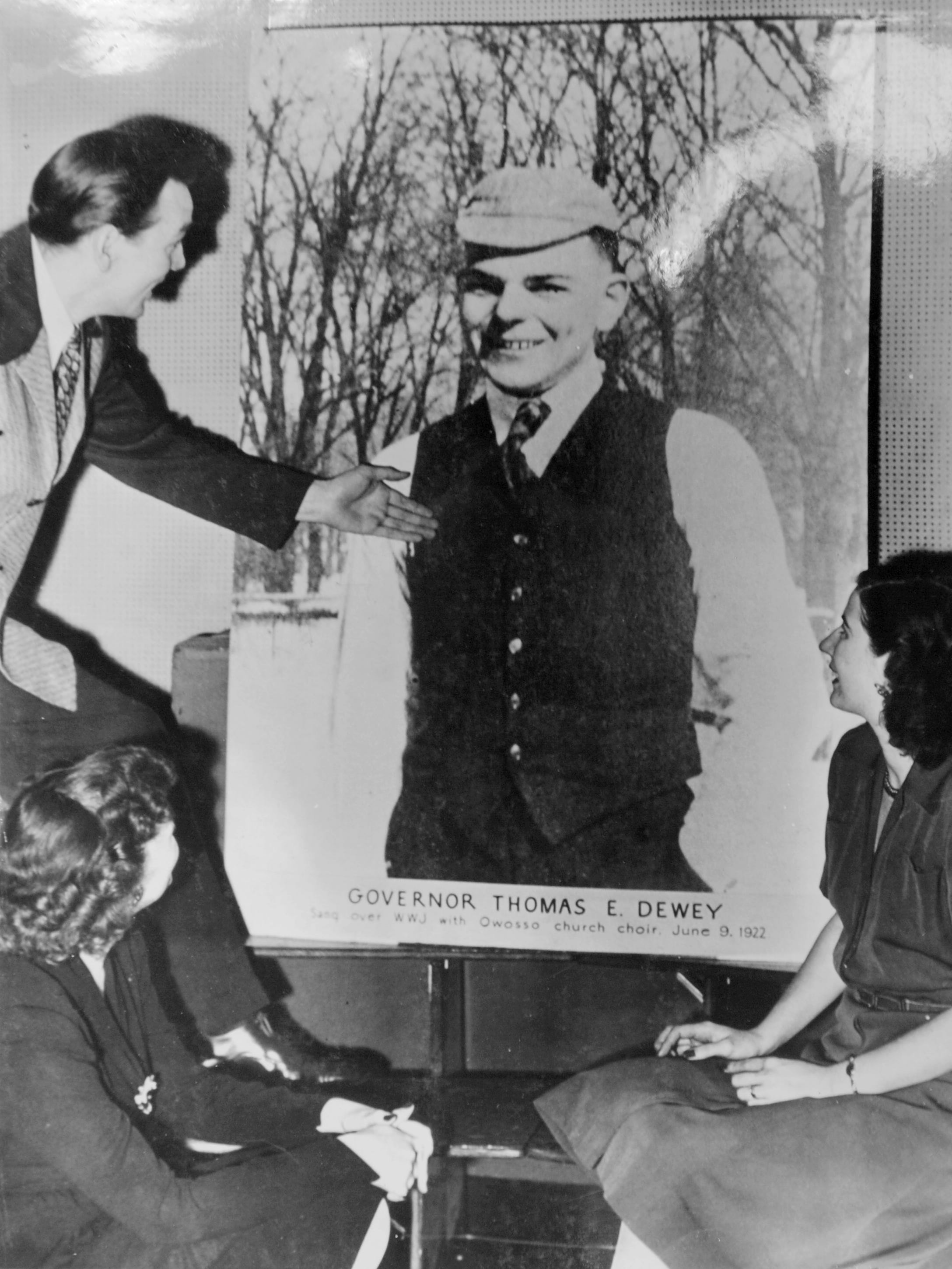
In this undated photo, people look at a vintage poster of Thomas E. Dewey, the governor of New York and Republican presidential candidate in 1944 and 1948. Dewey was a native of Owosso, Michigan, and, as the poster notes, sang over WWJ with an Owosso church choir in 1922.
The Detroit News Archives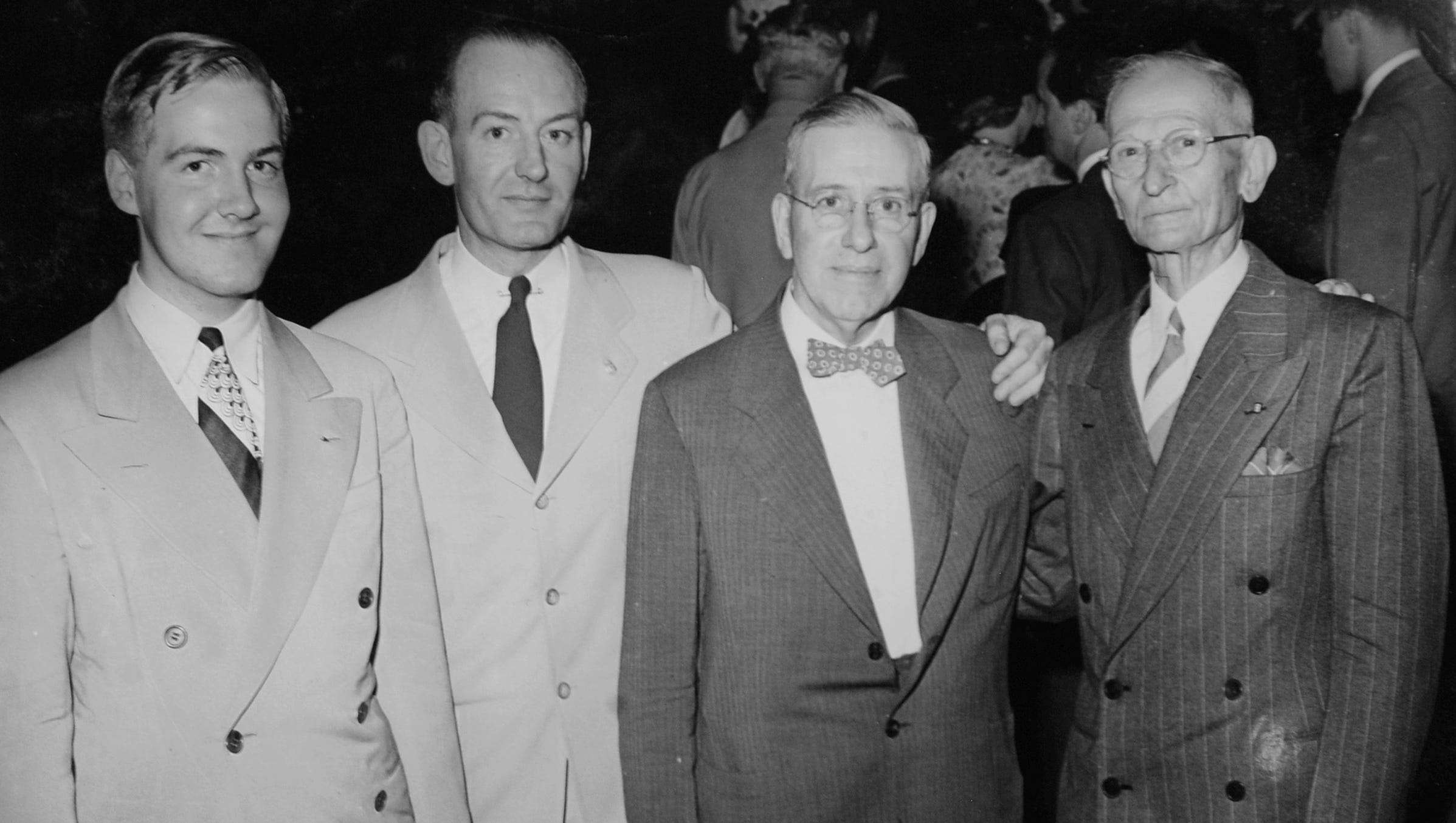
Three generations of the Scripps family attend WWJ's 25th birthday party in 1945: From left, William E. Scripps II; Willliam J. Scripps, general manager of WWJ; and his father Detroit News Publisher William E. Scripps. At right is Tom Clark, an early radio experimenter who was a key adviser in the creation of the WWJ.
The Detroit News Archives